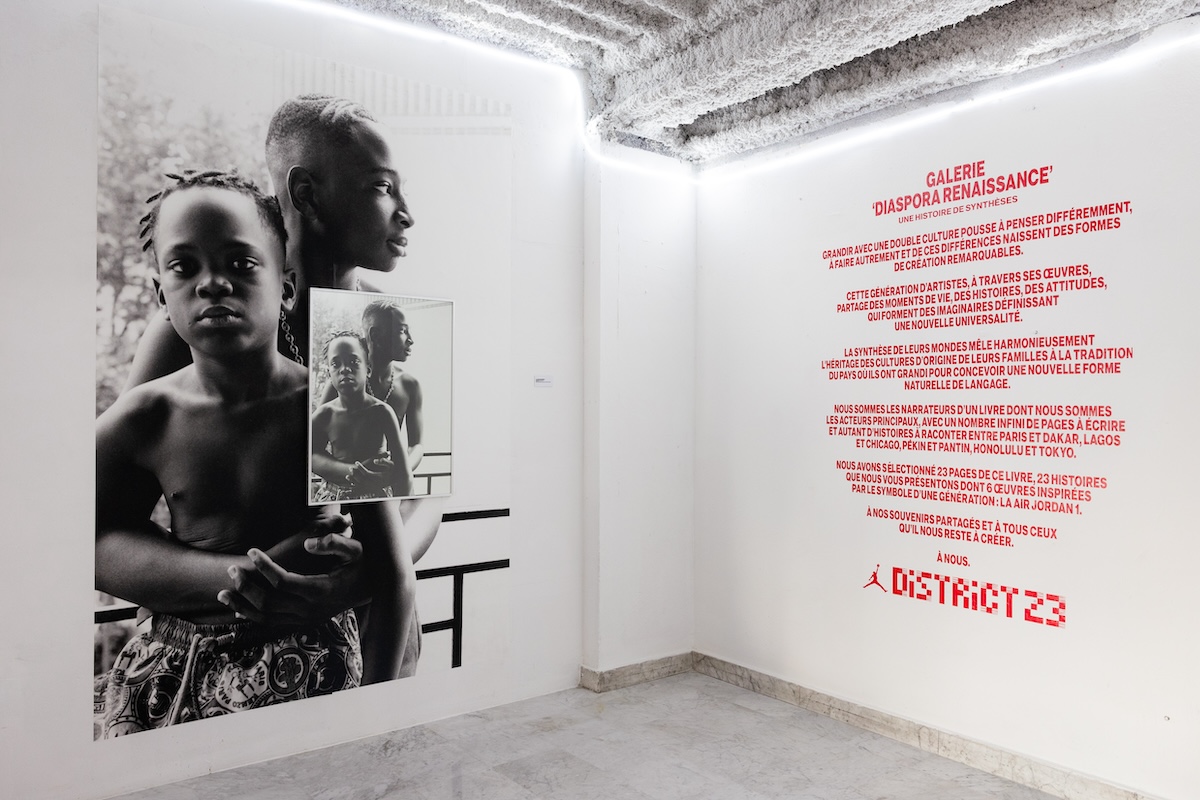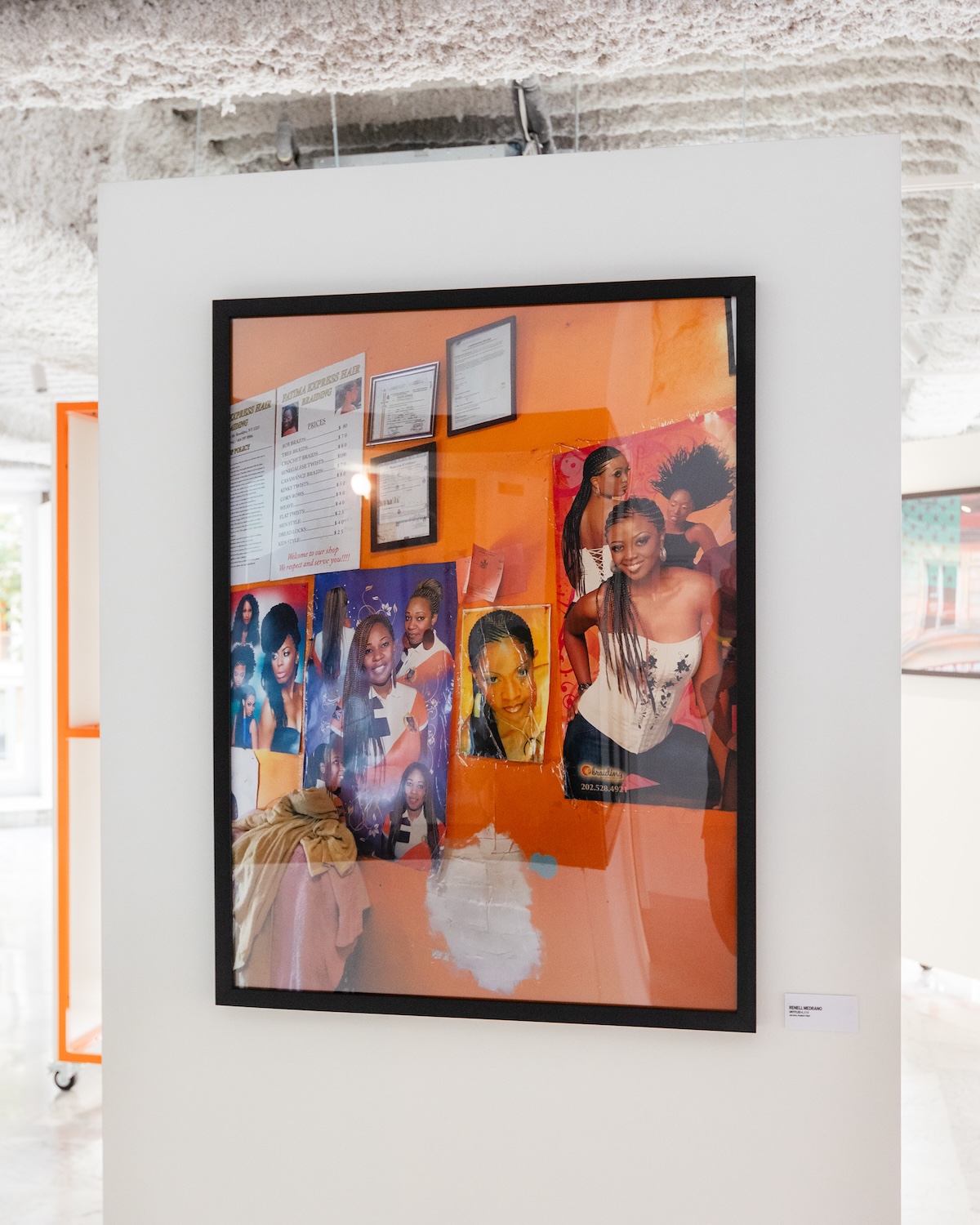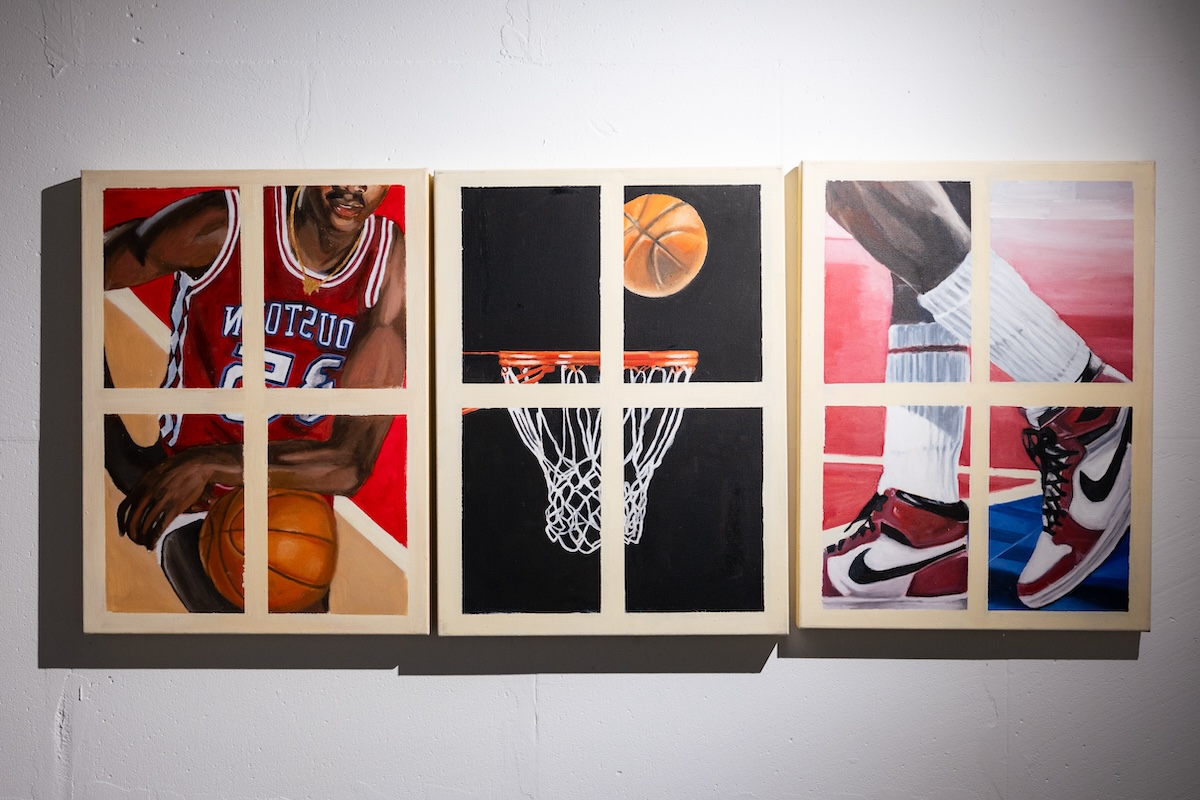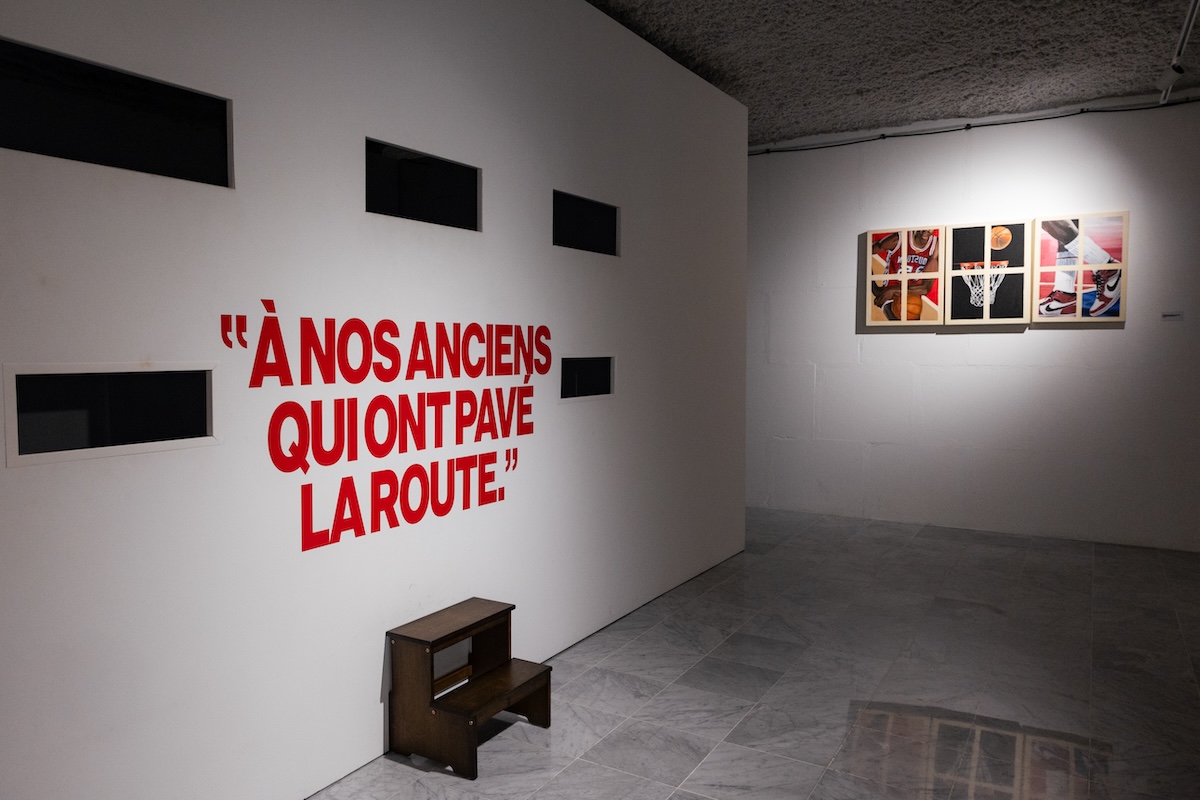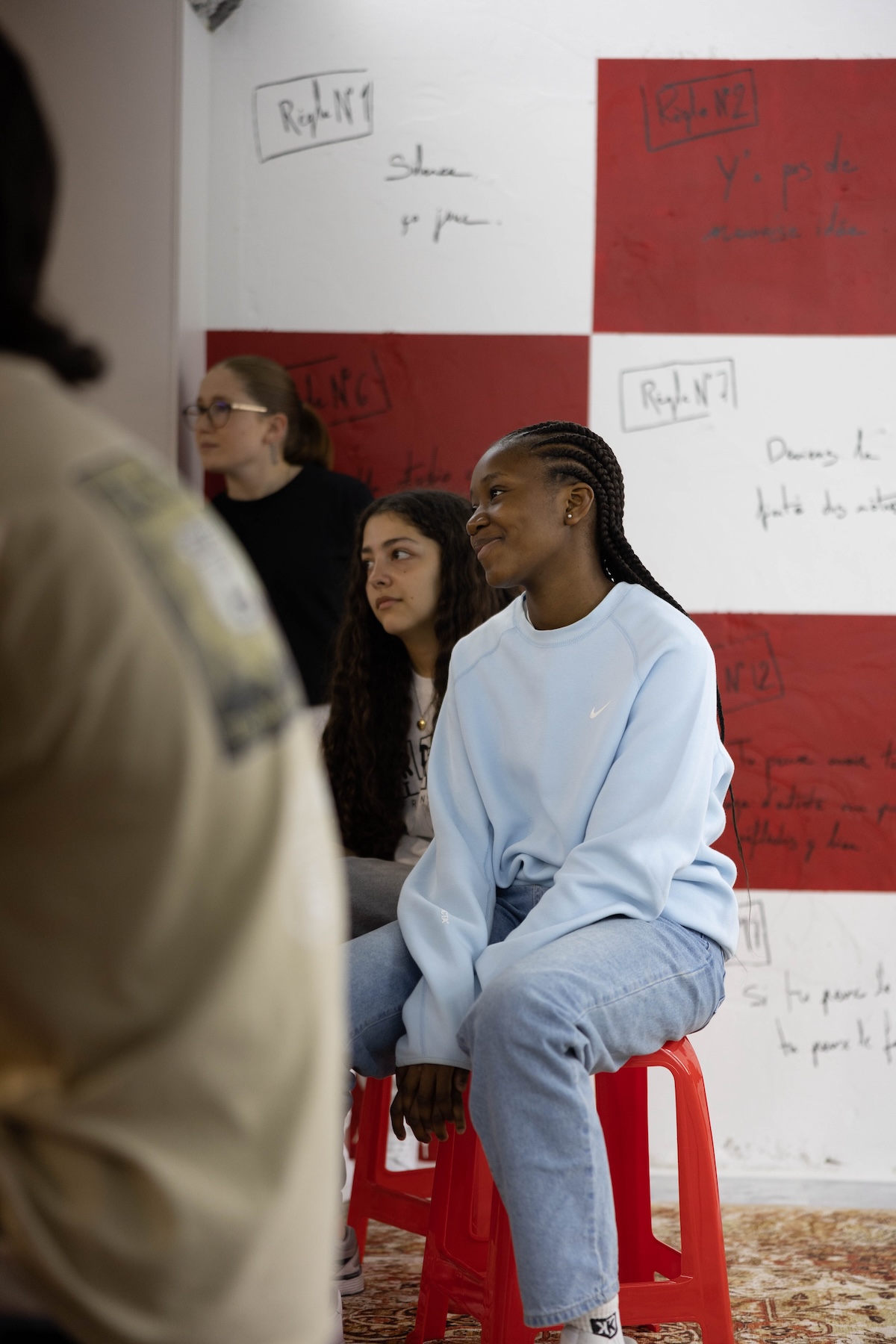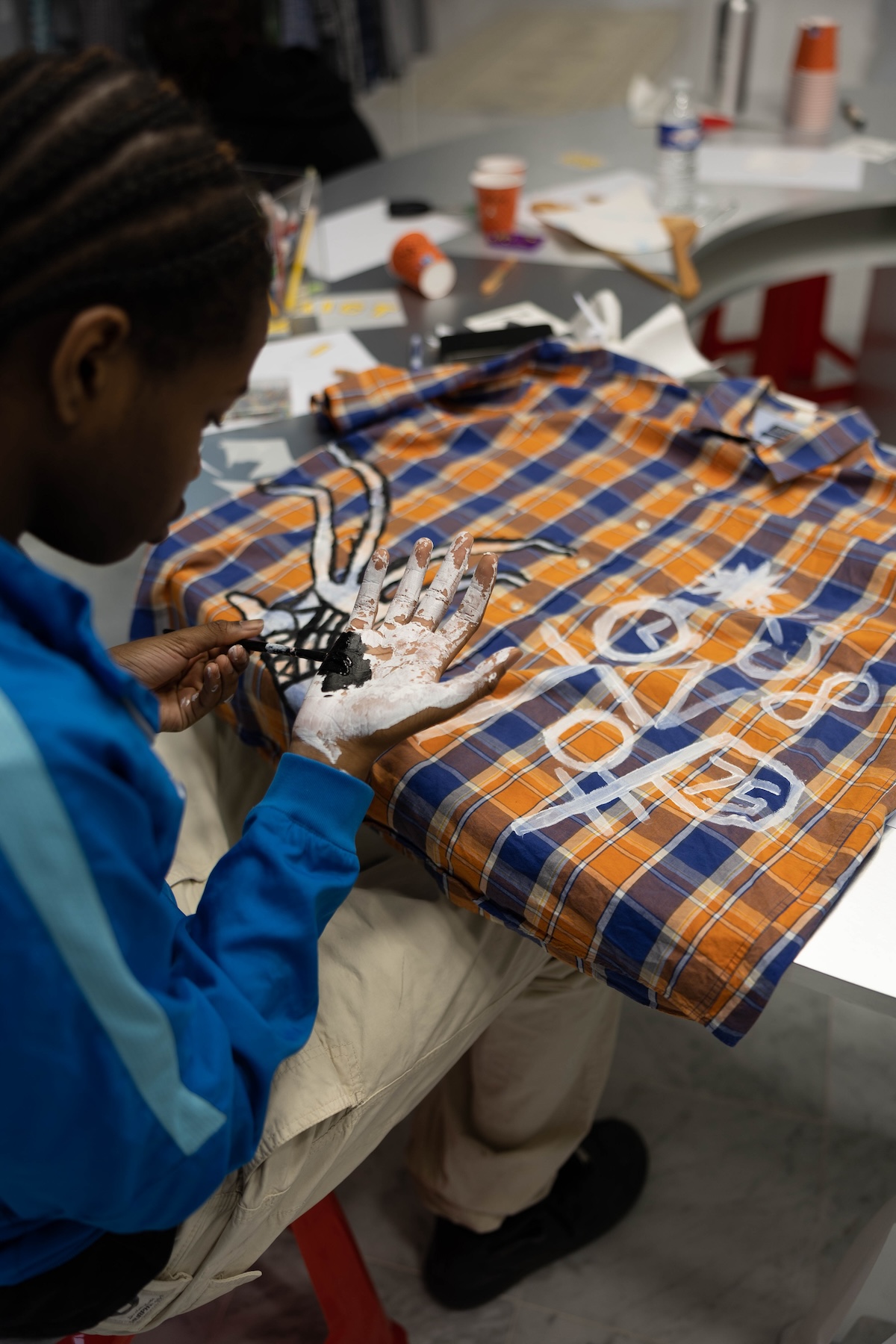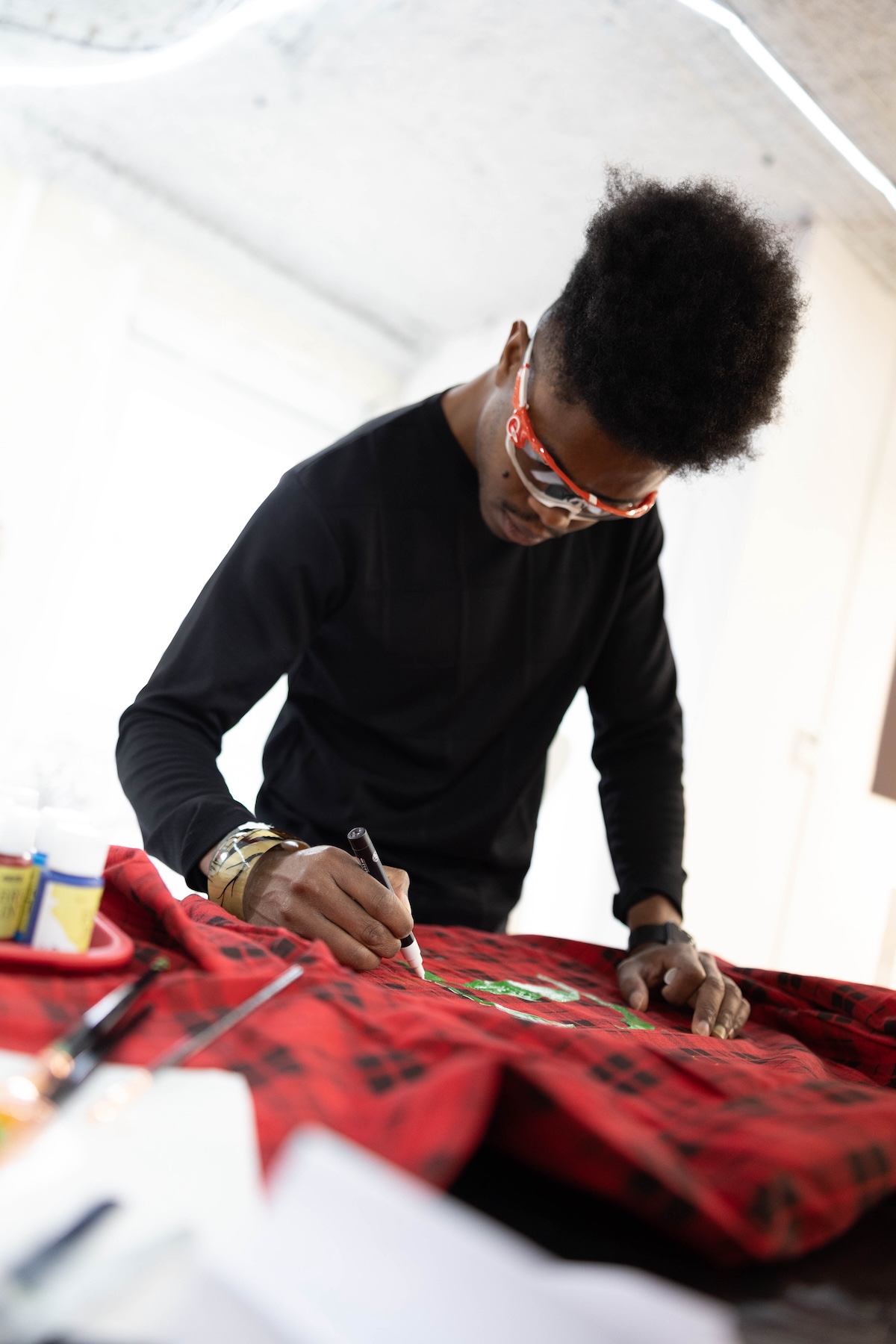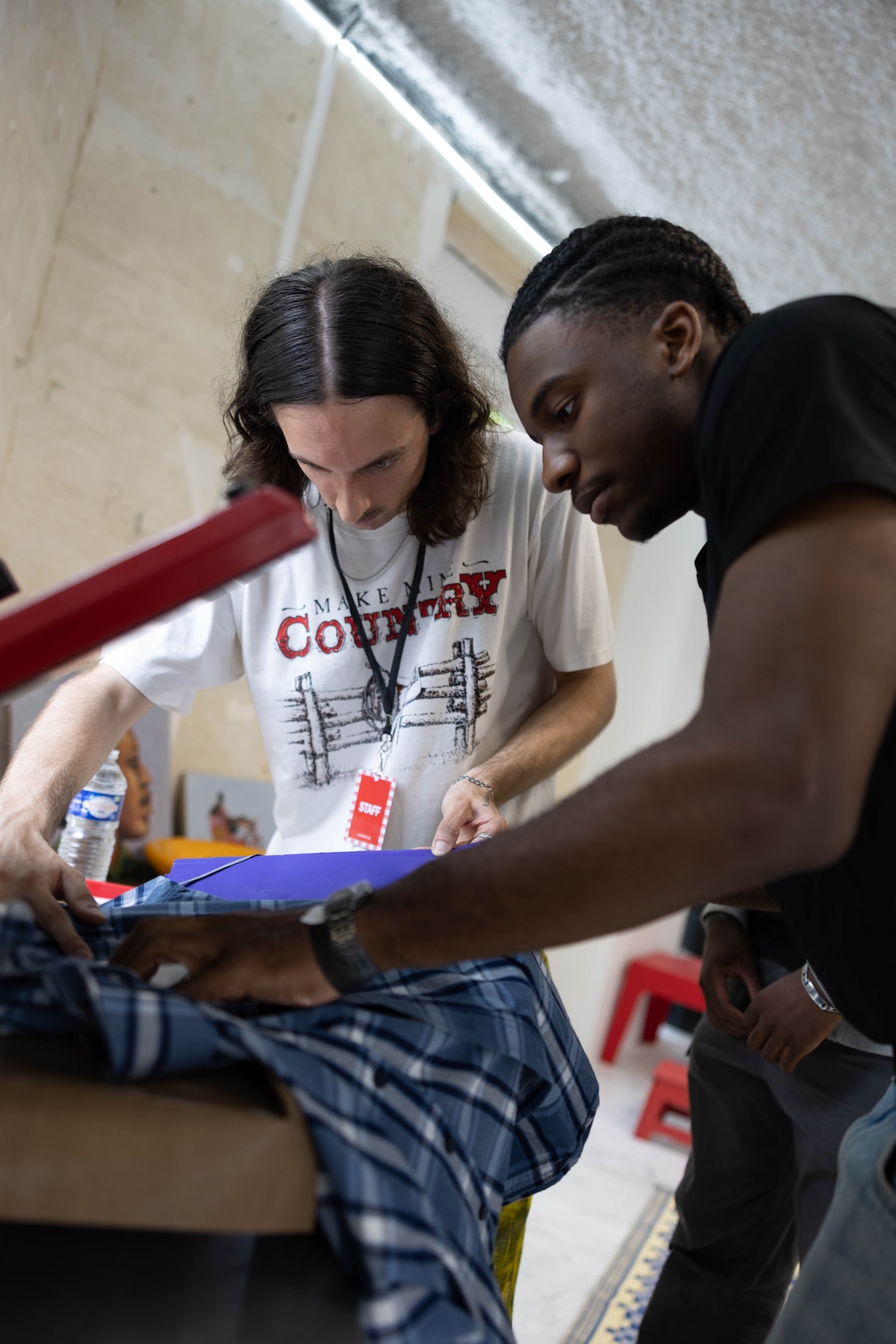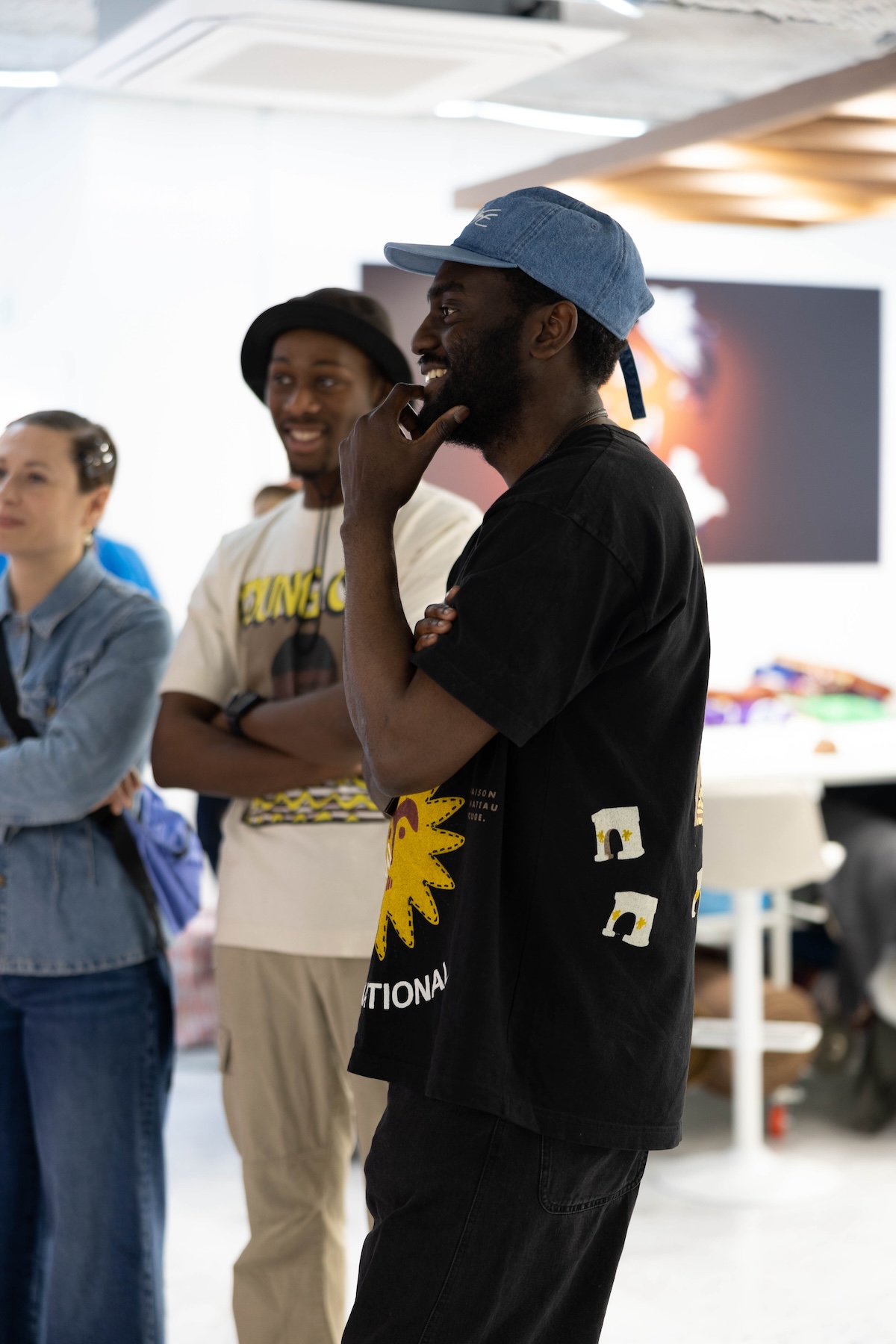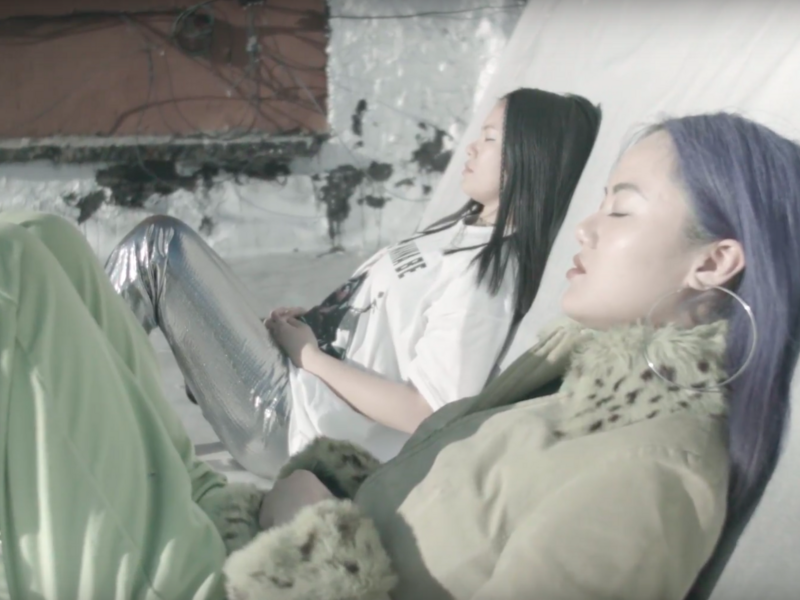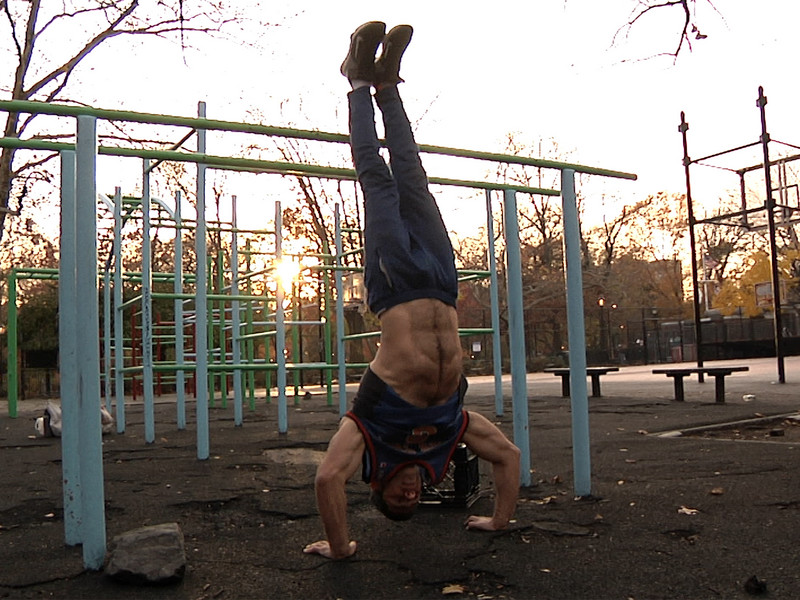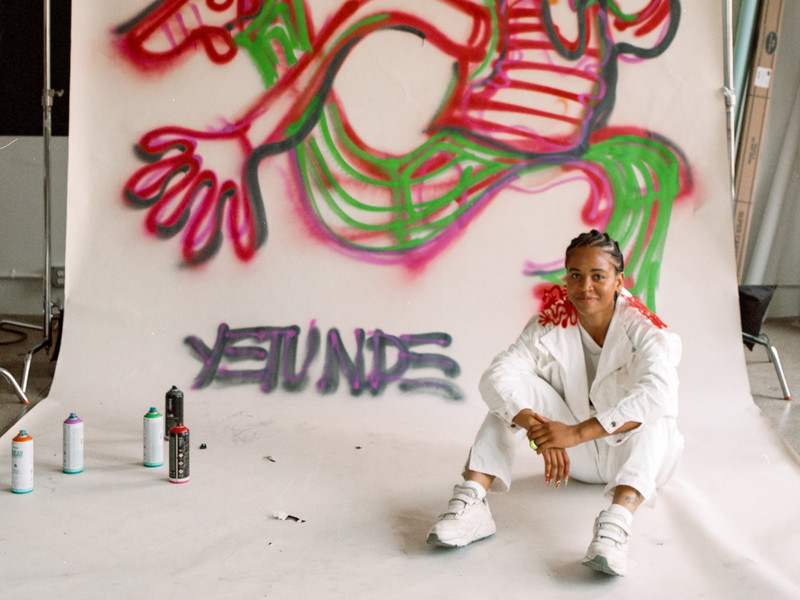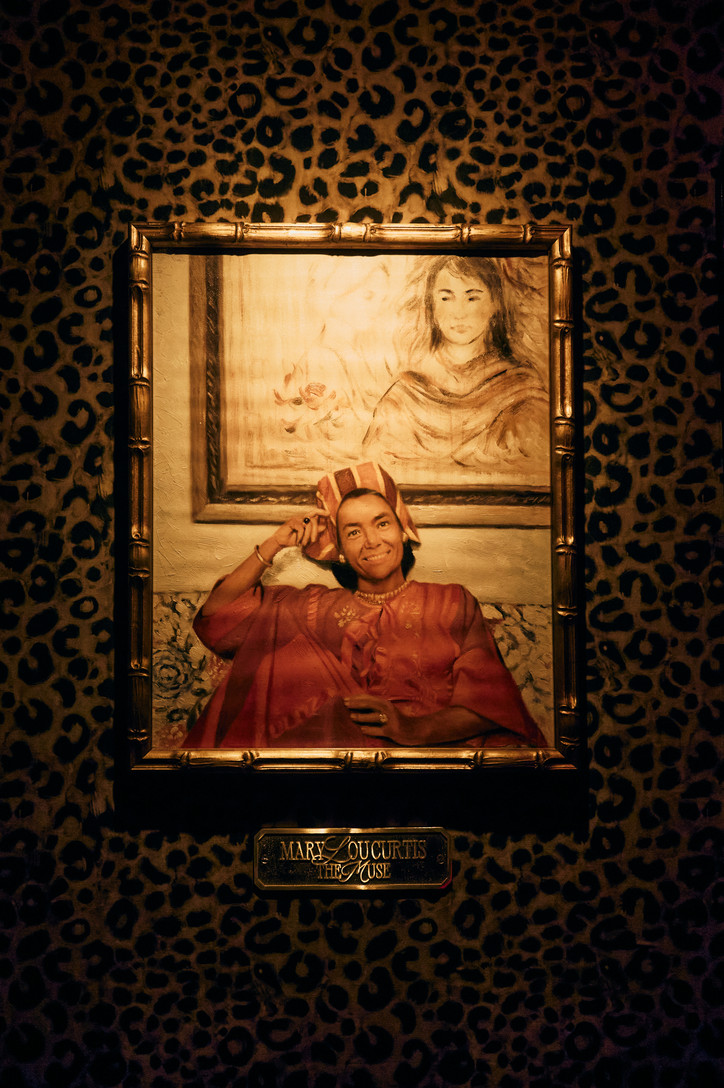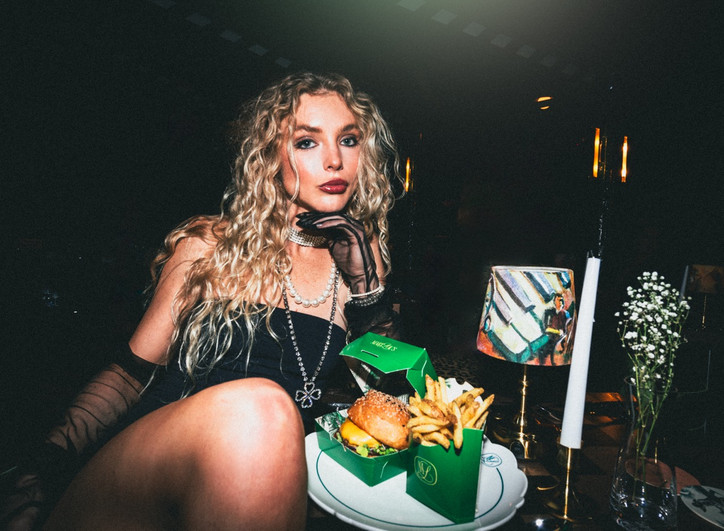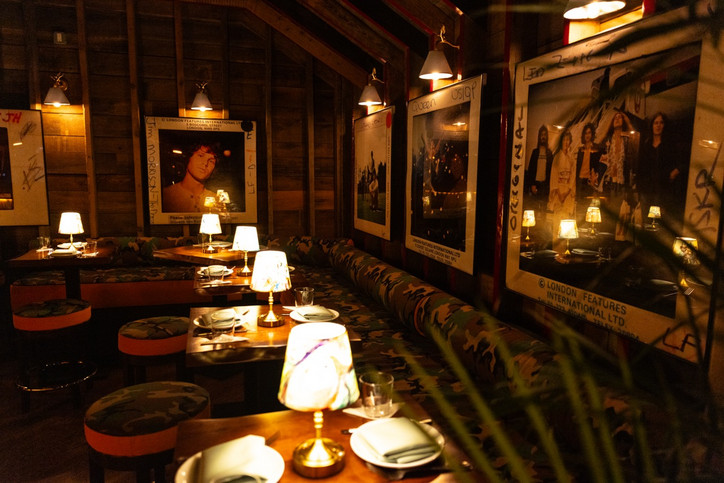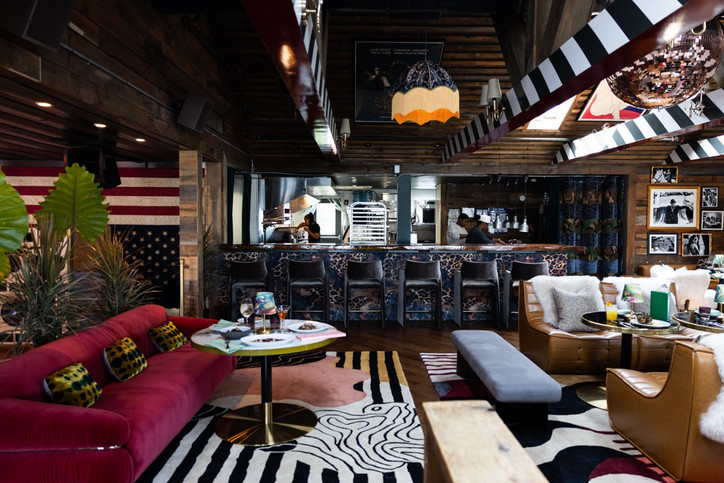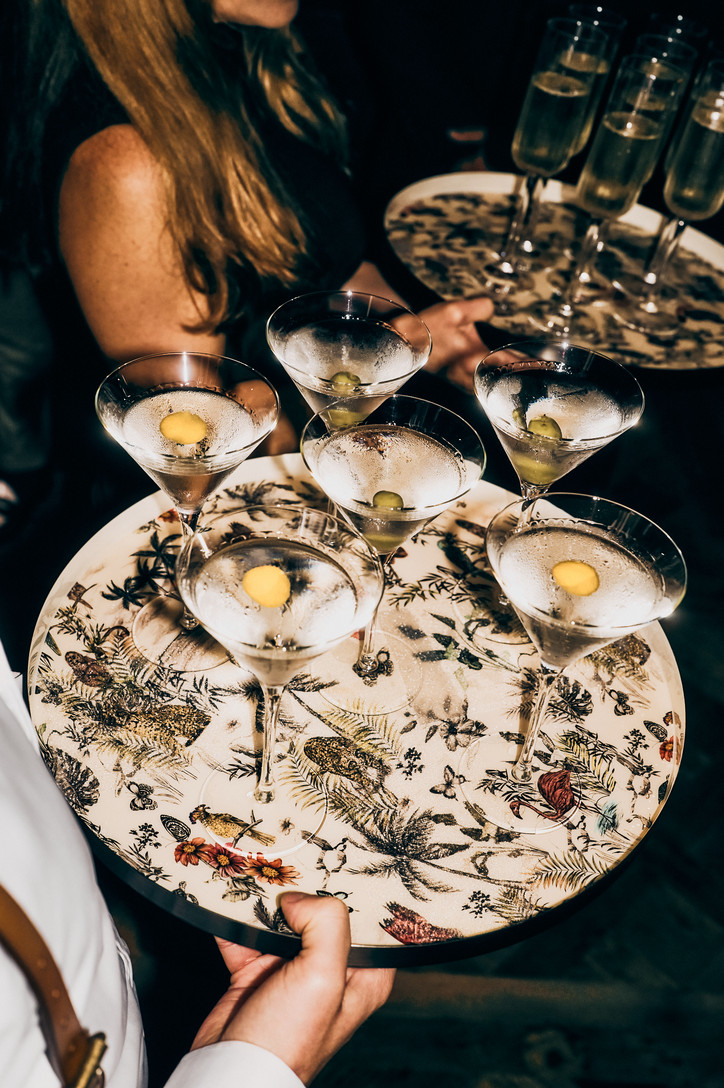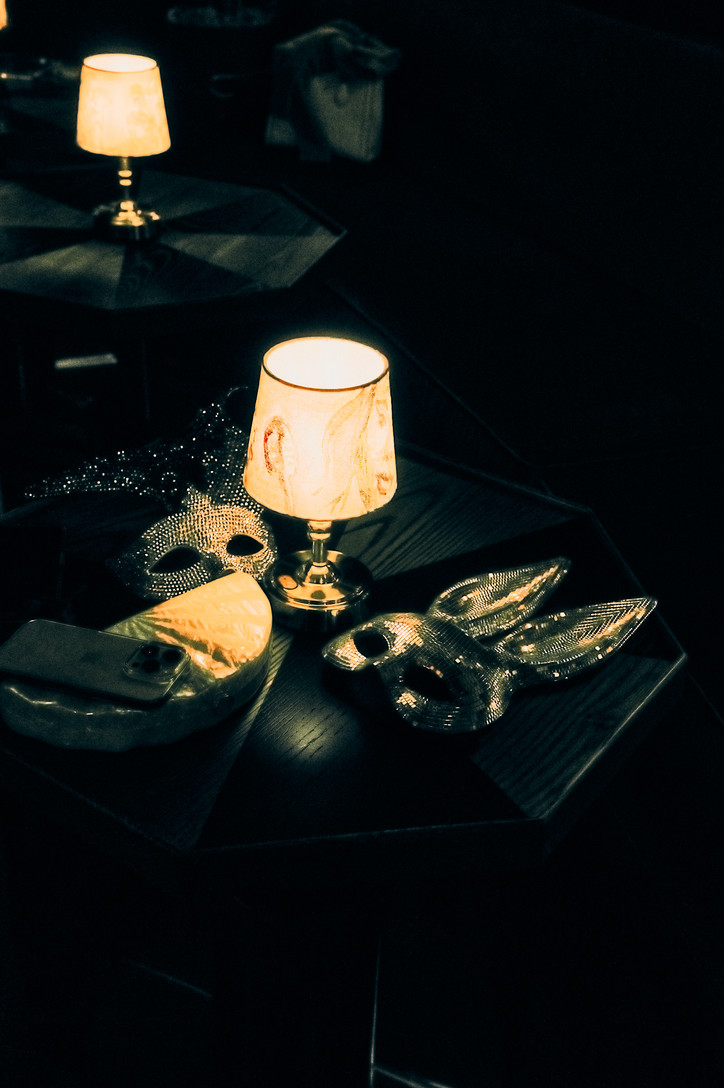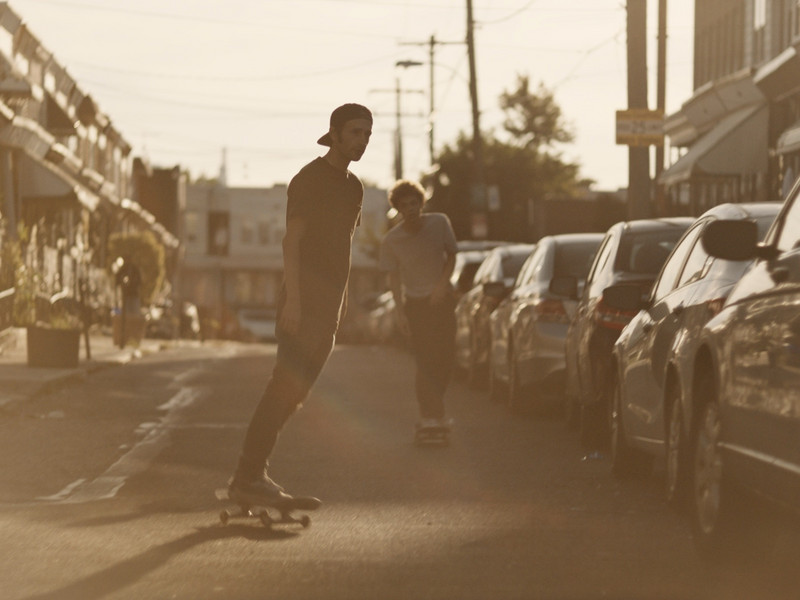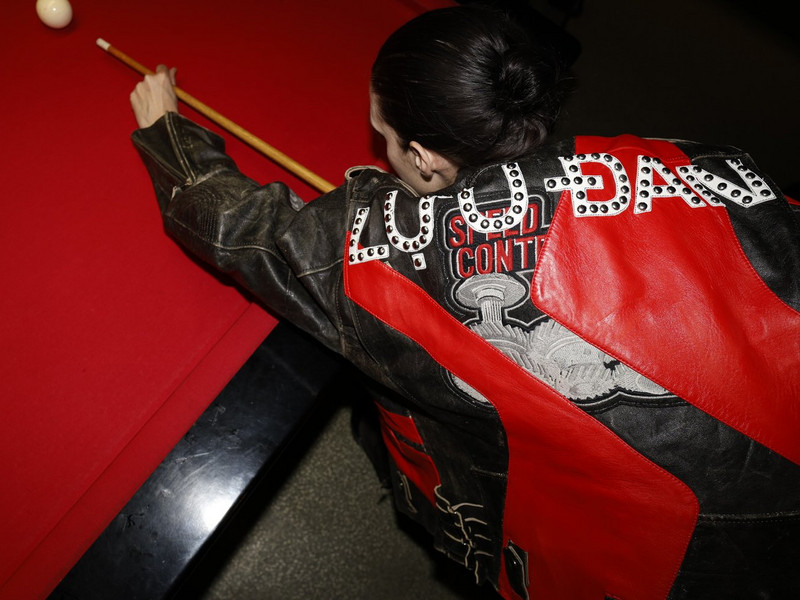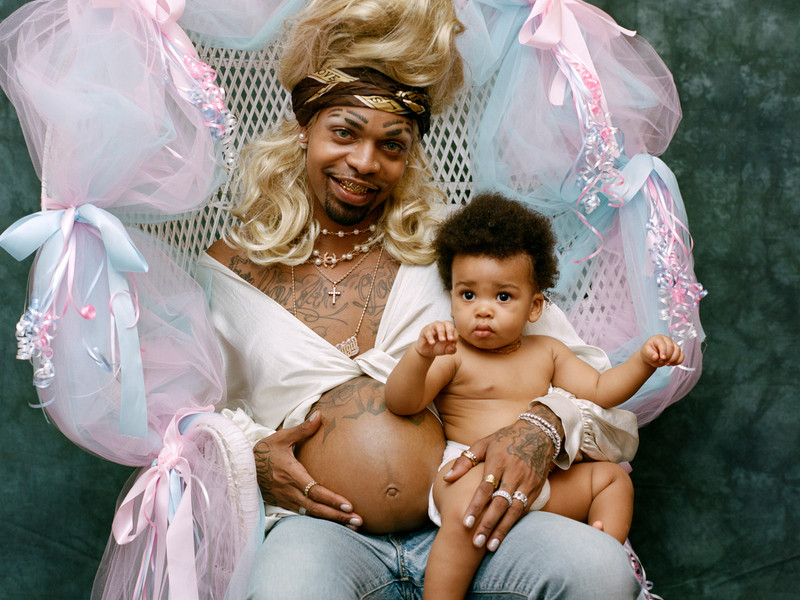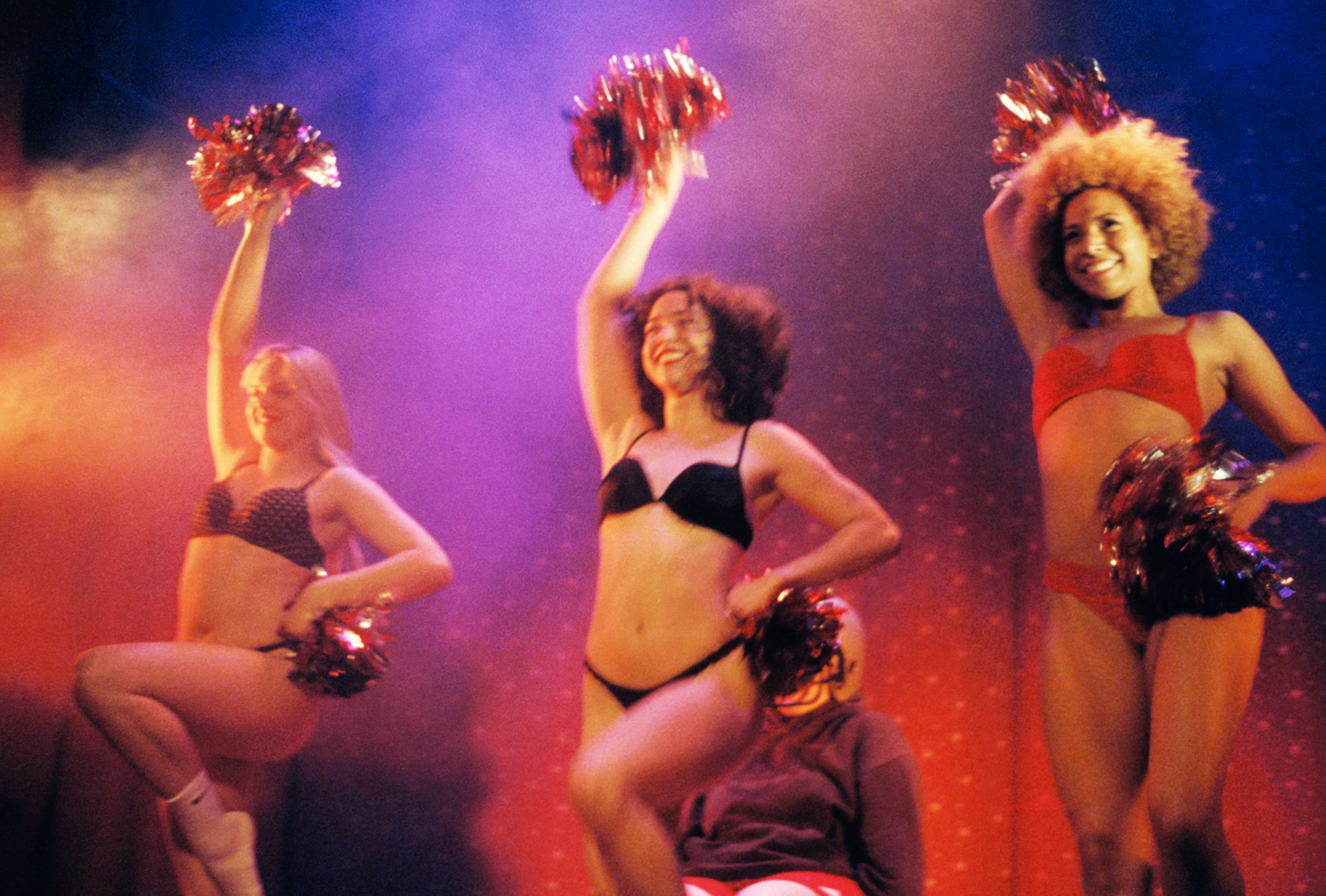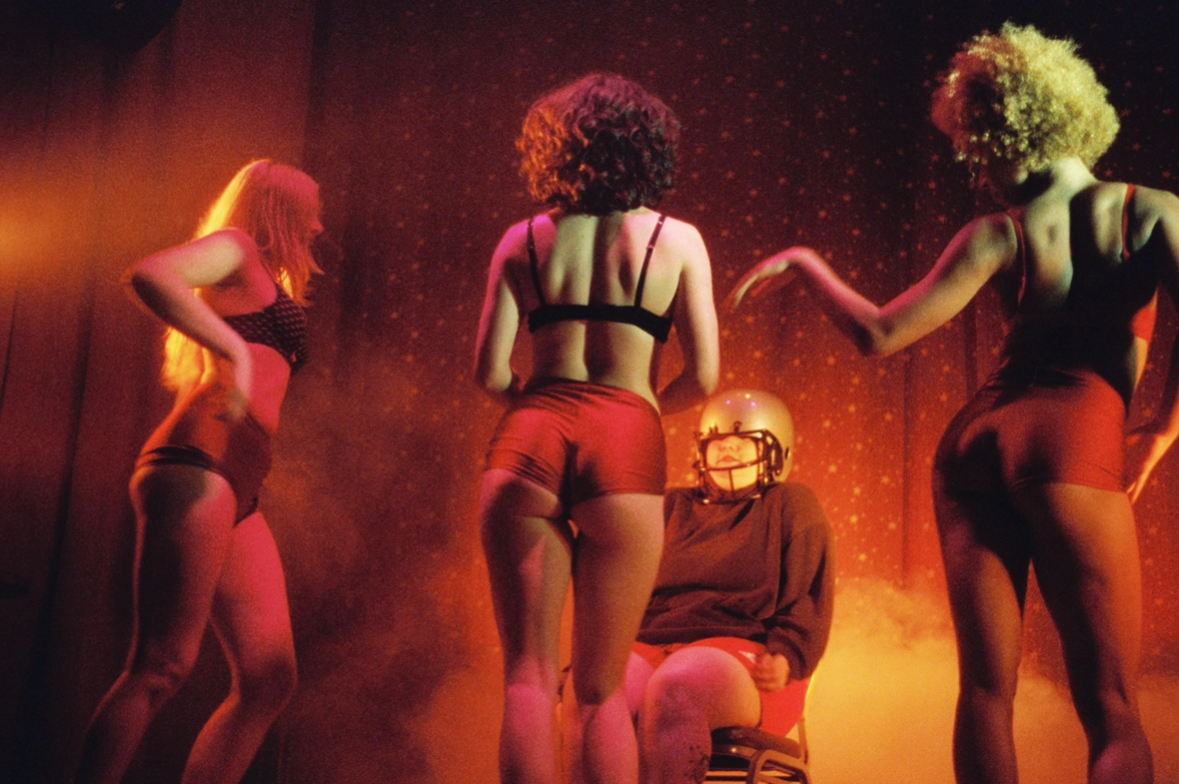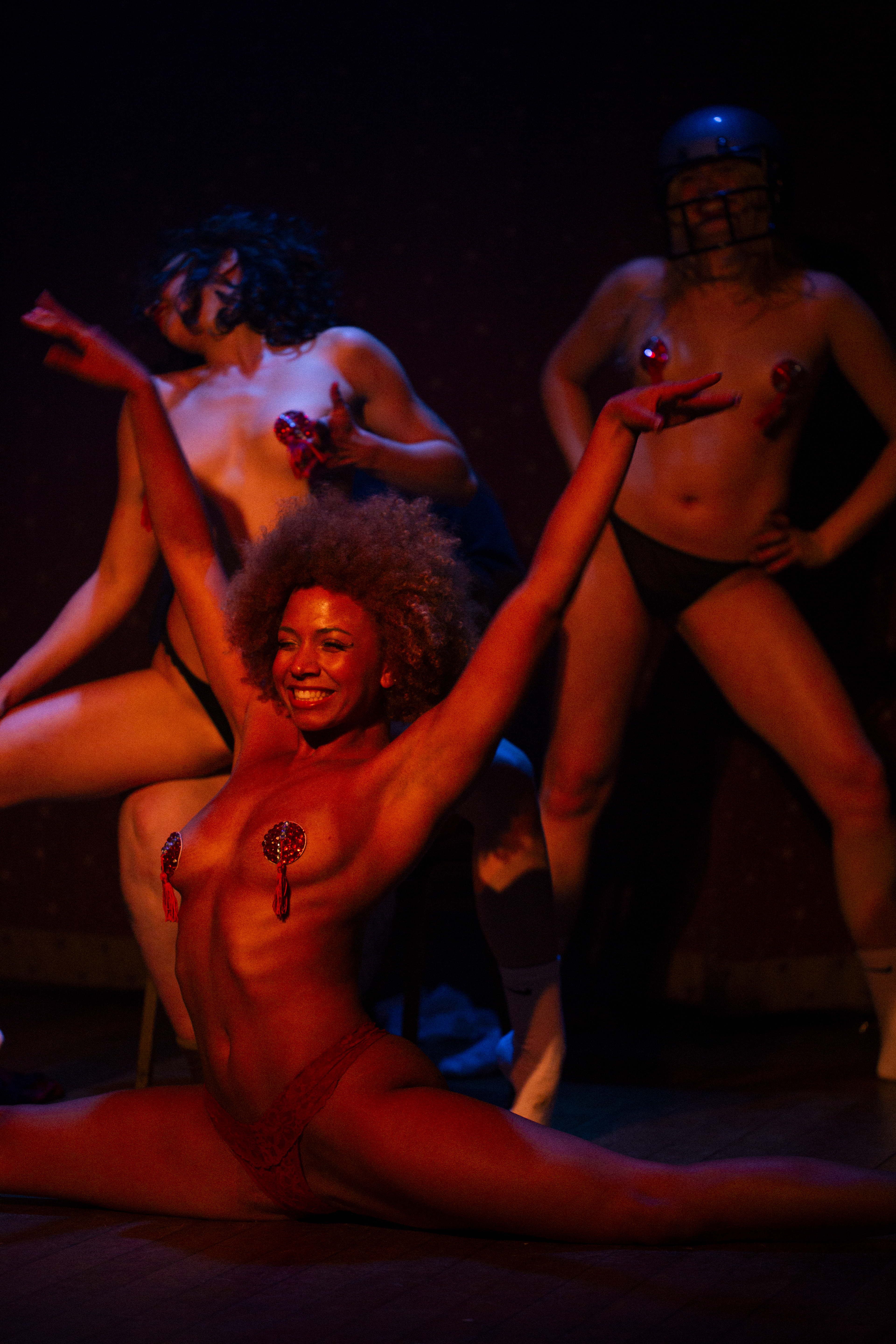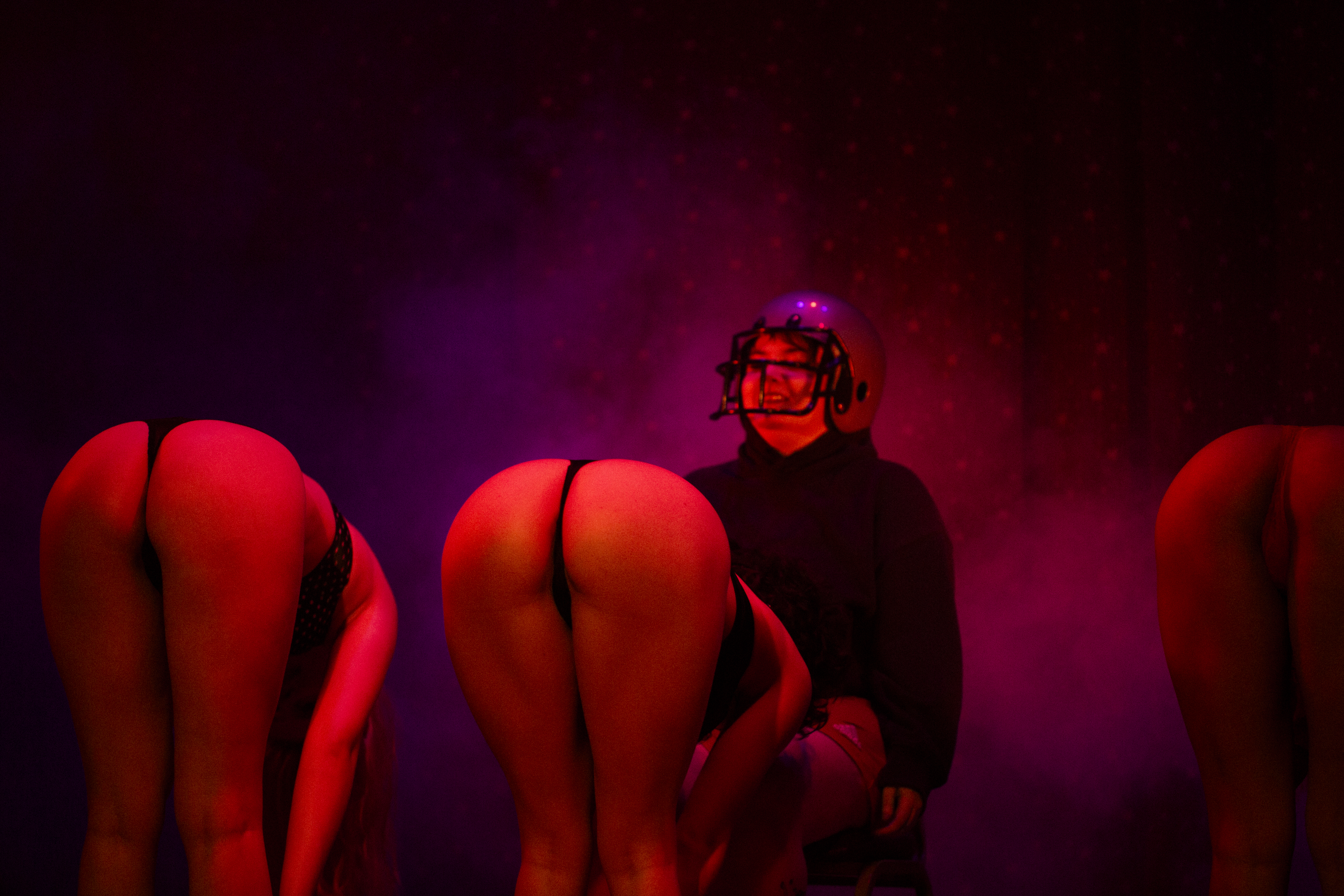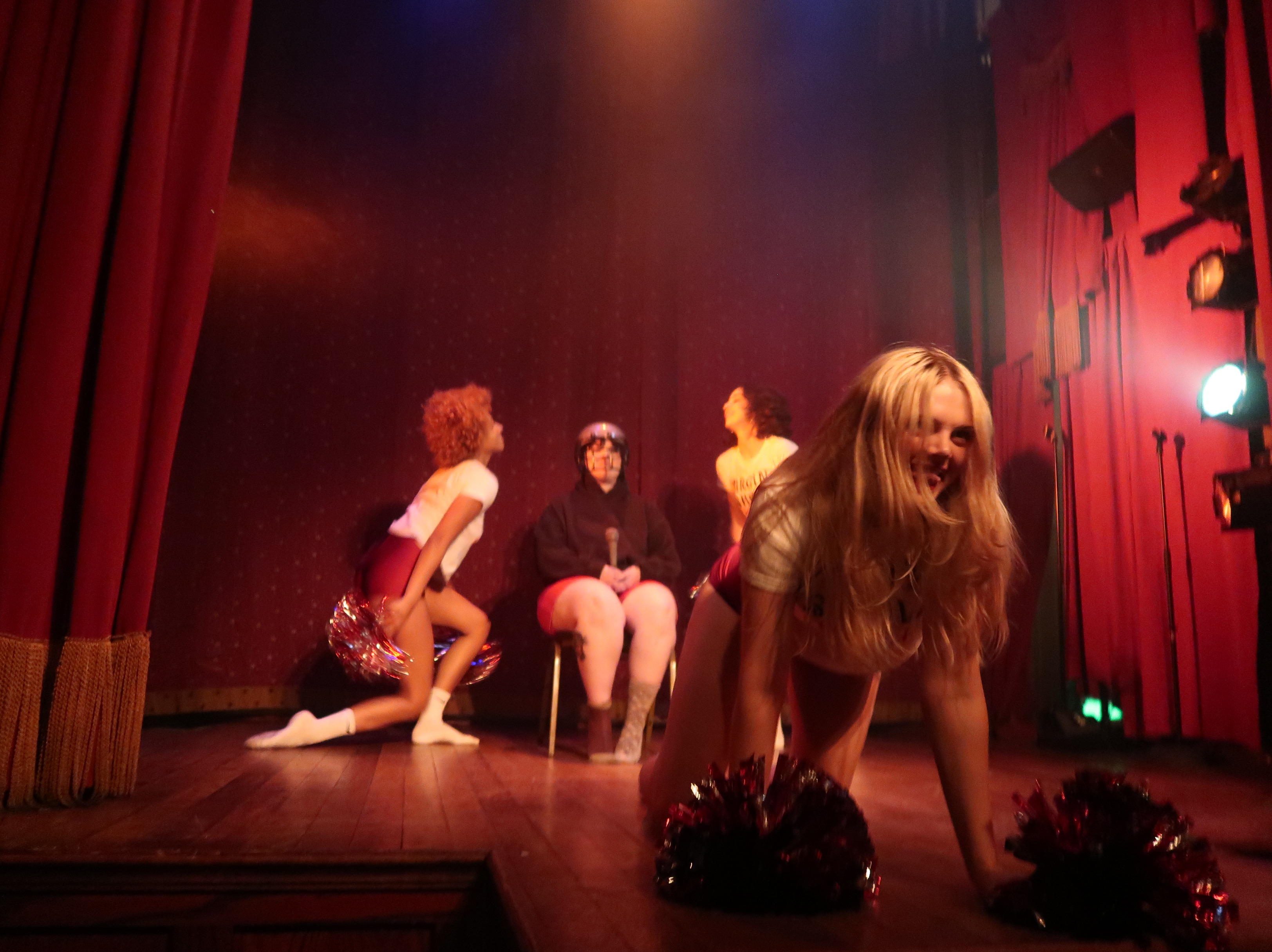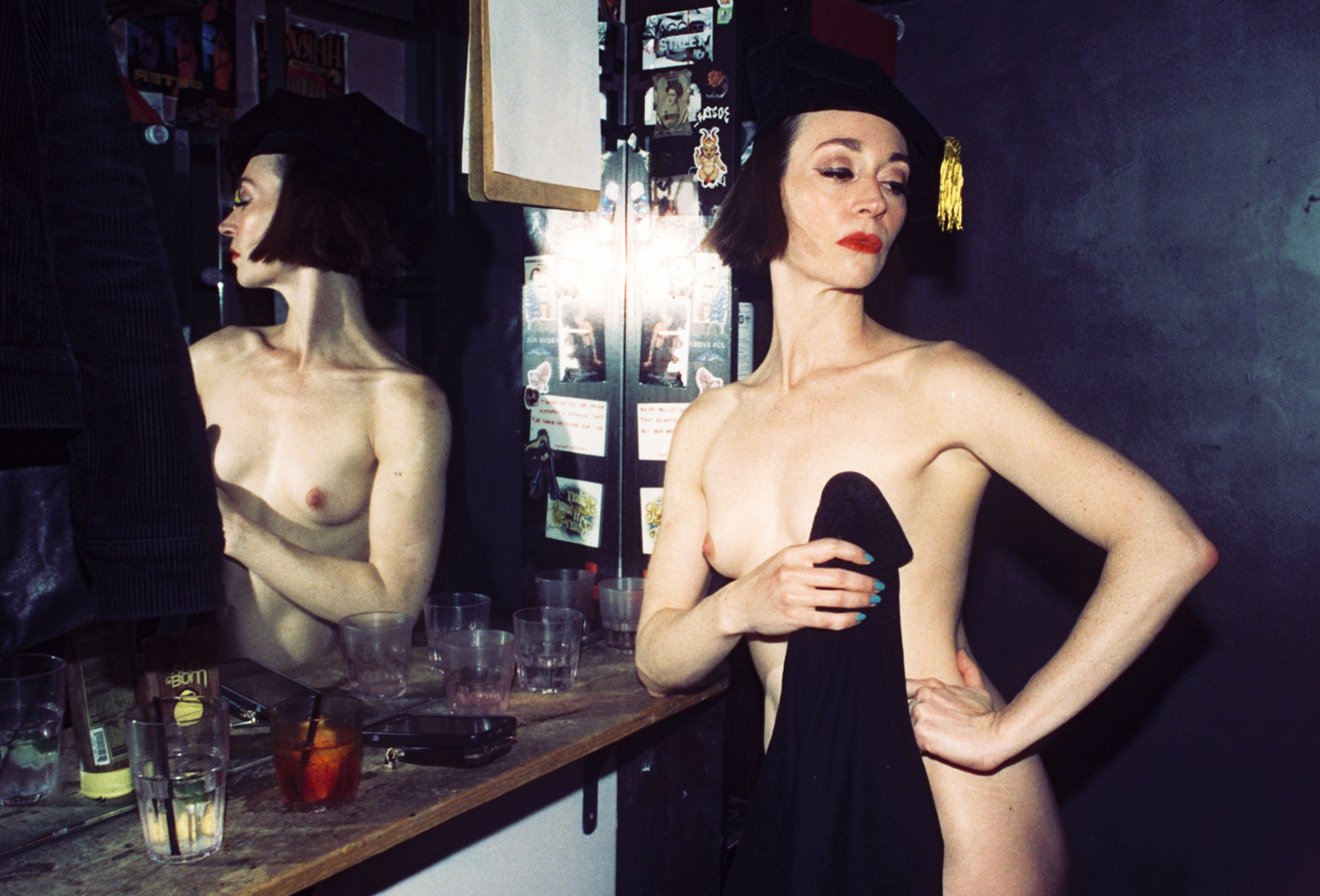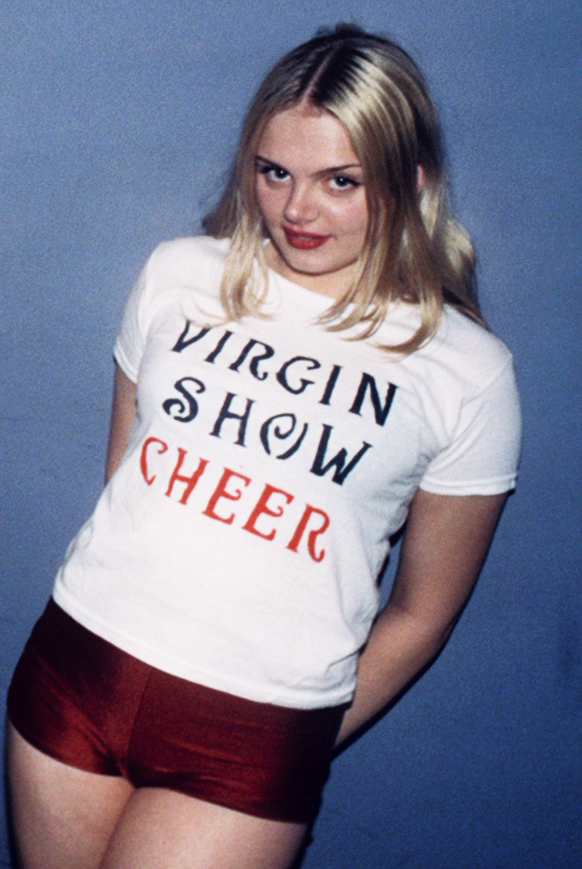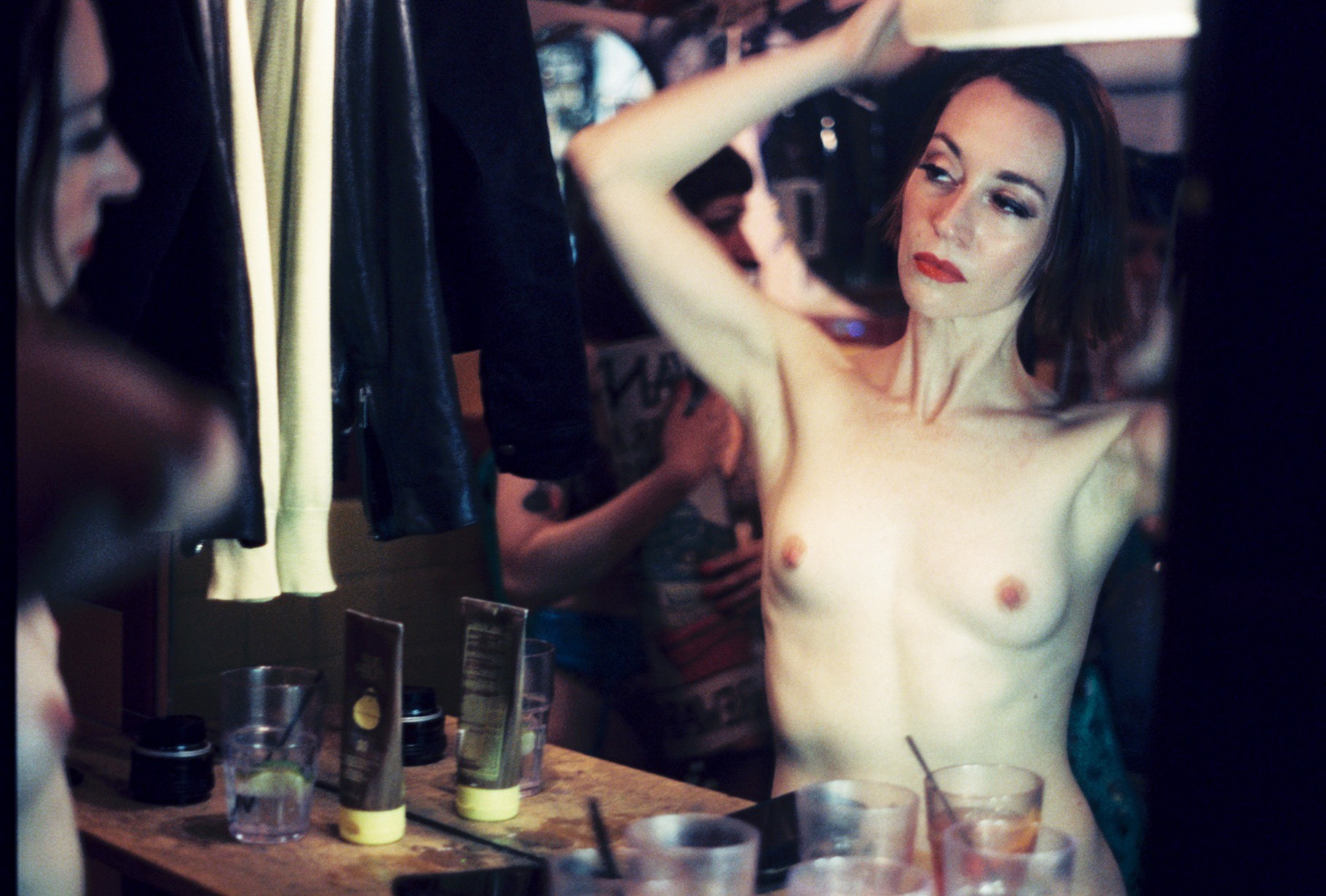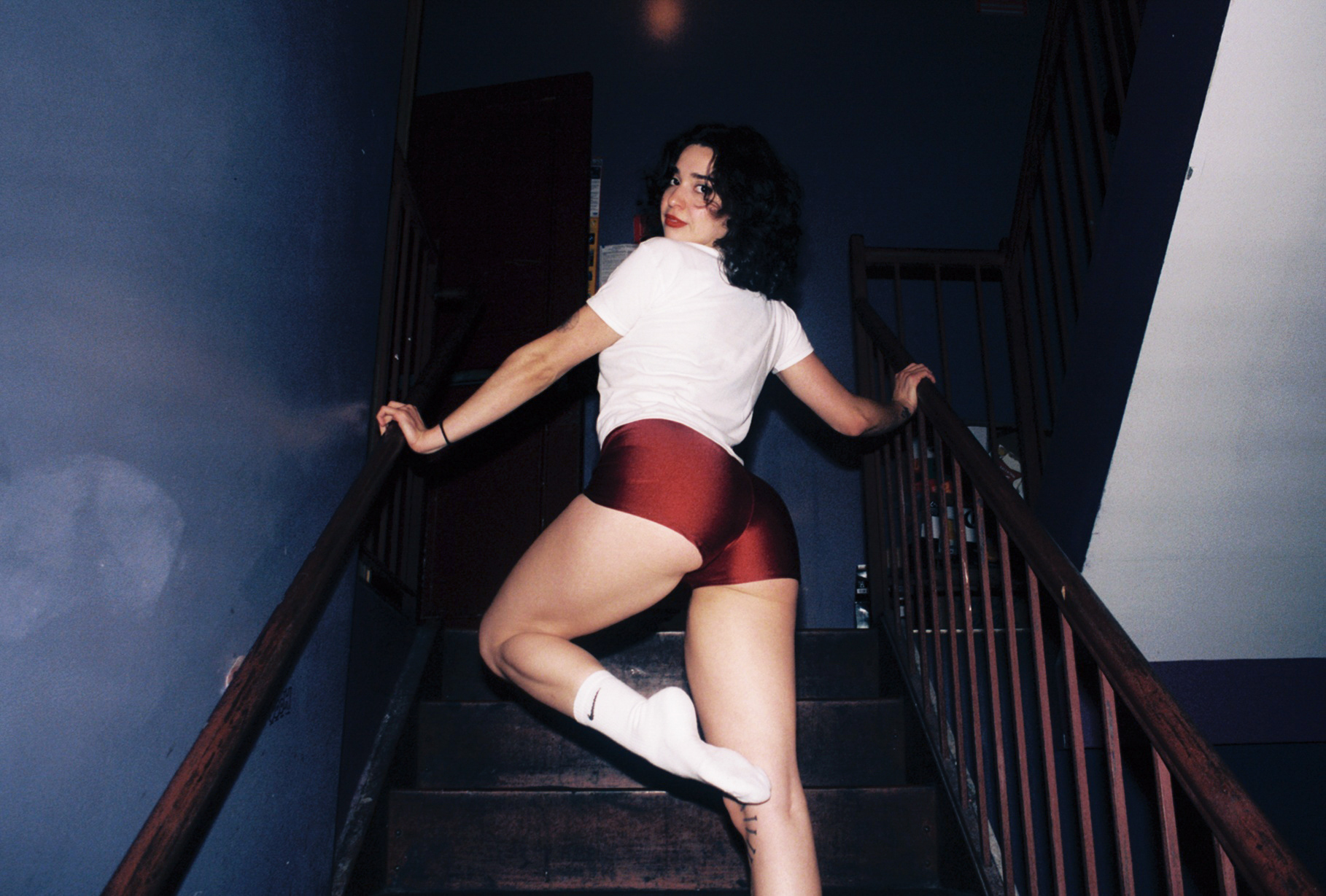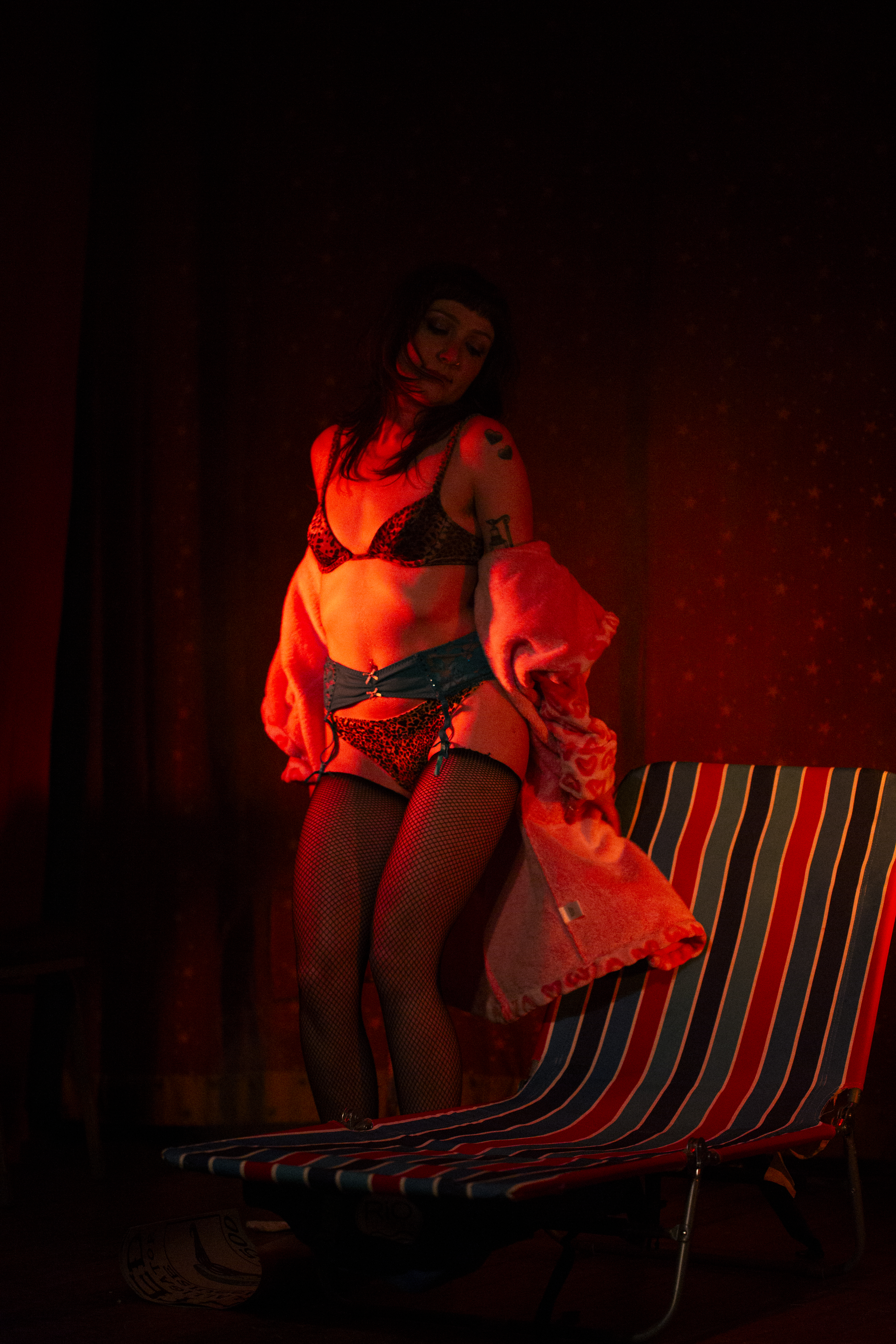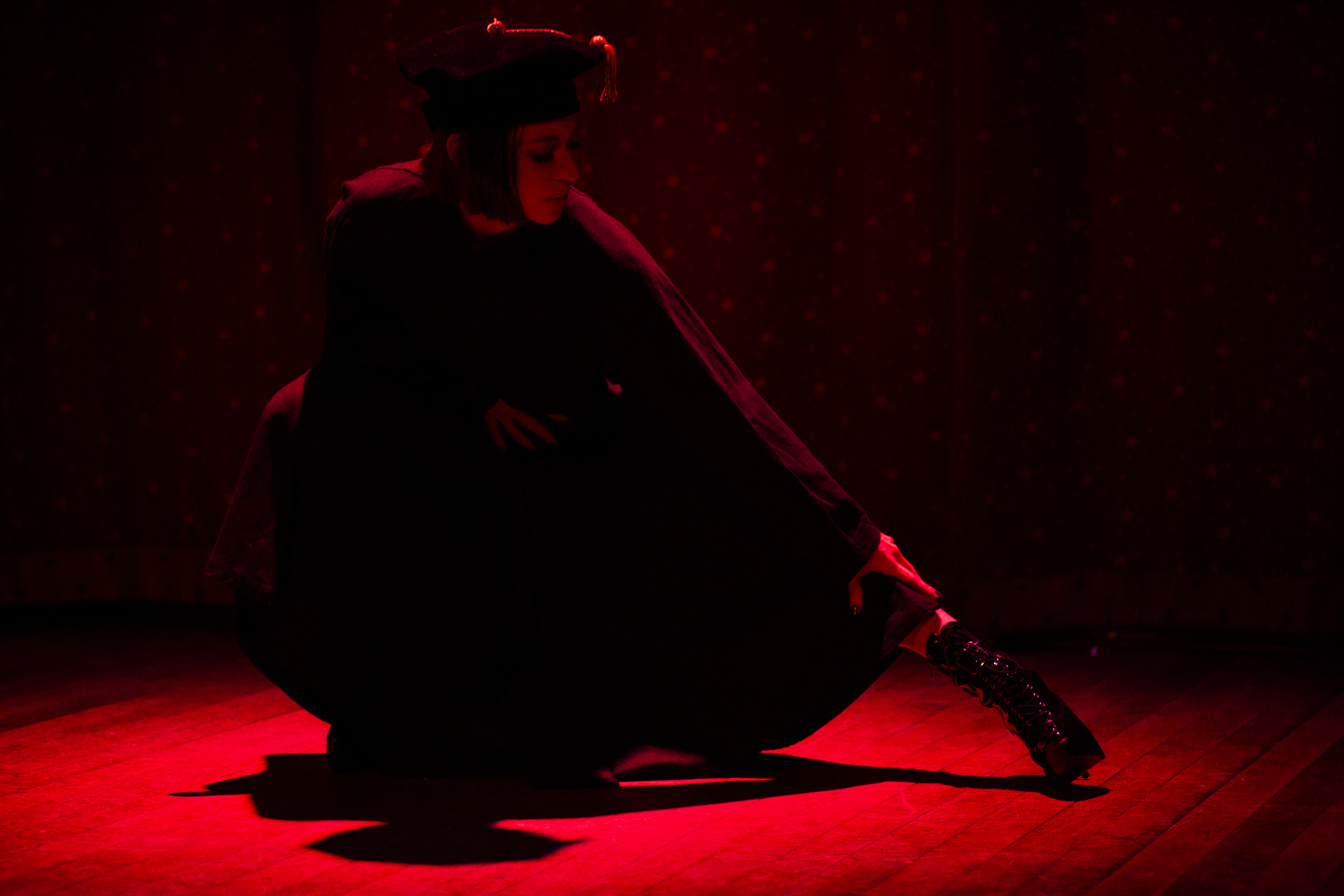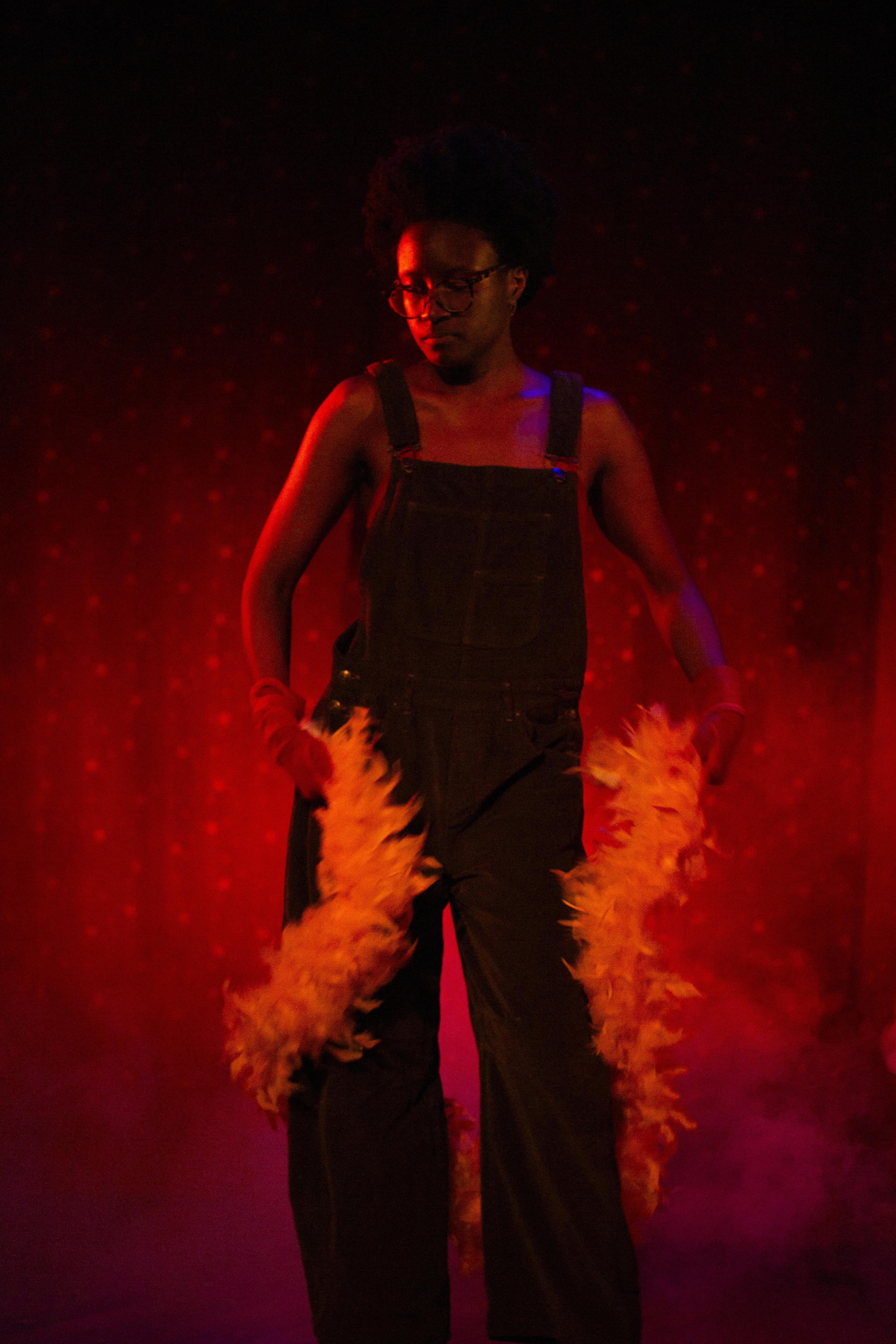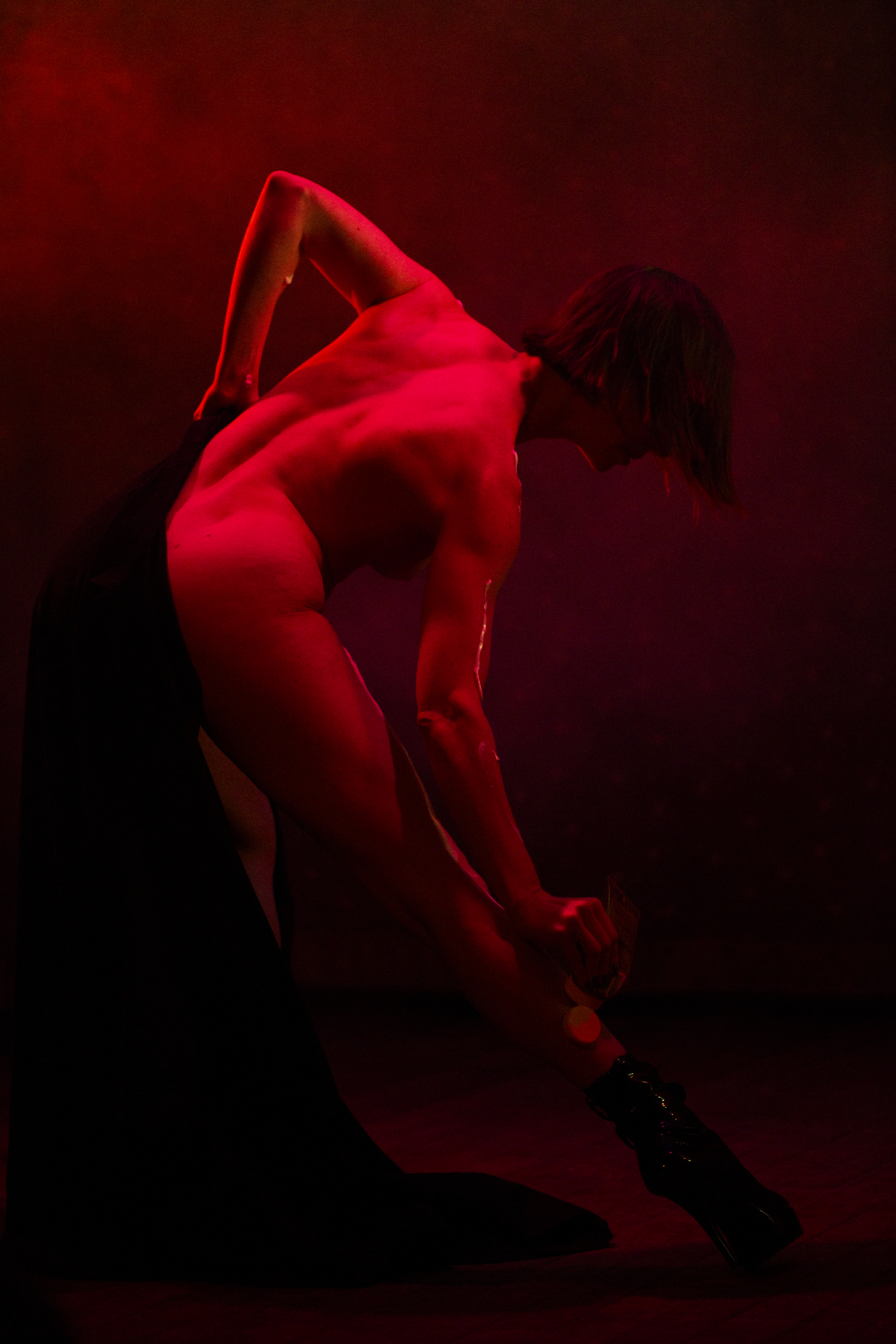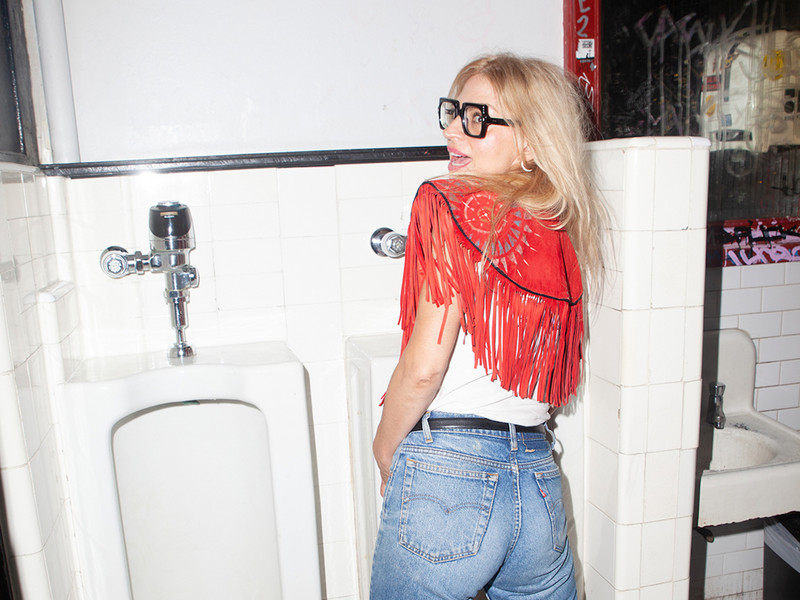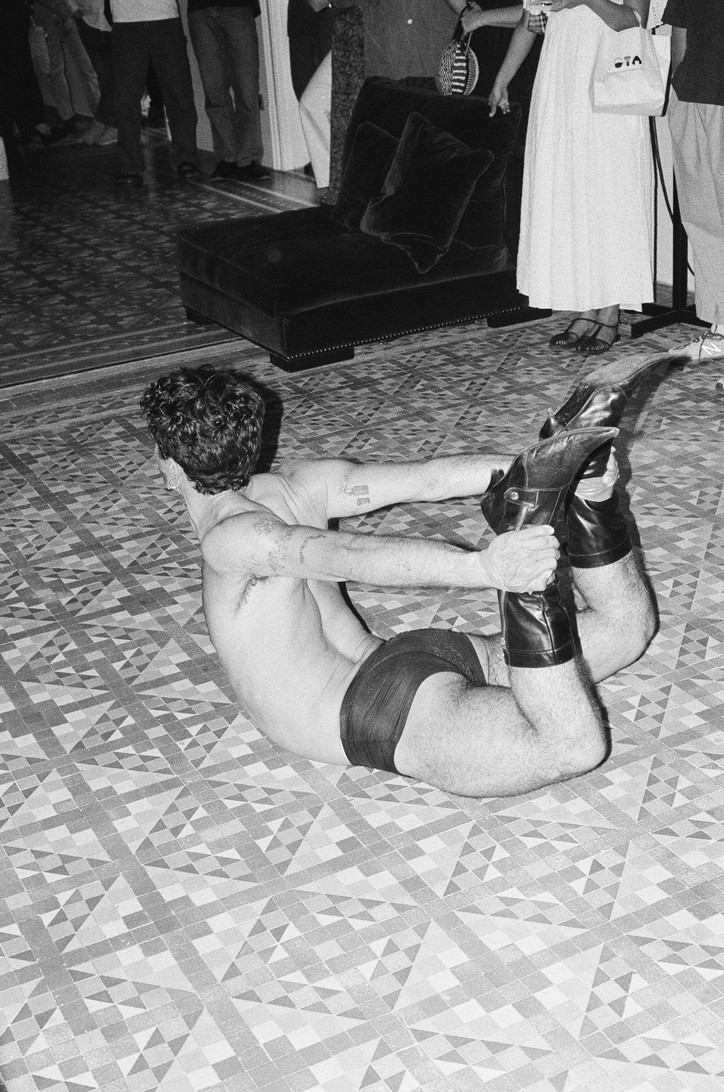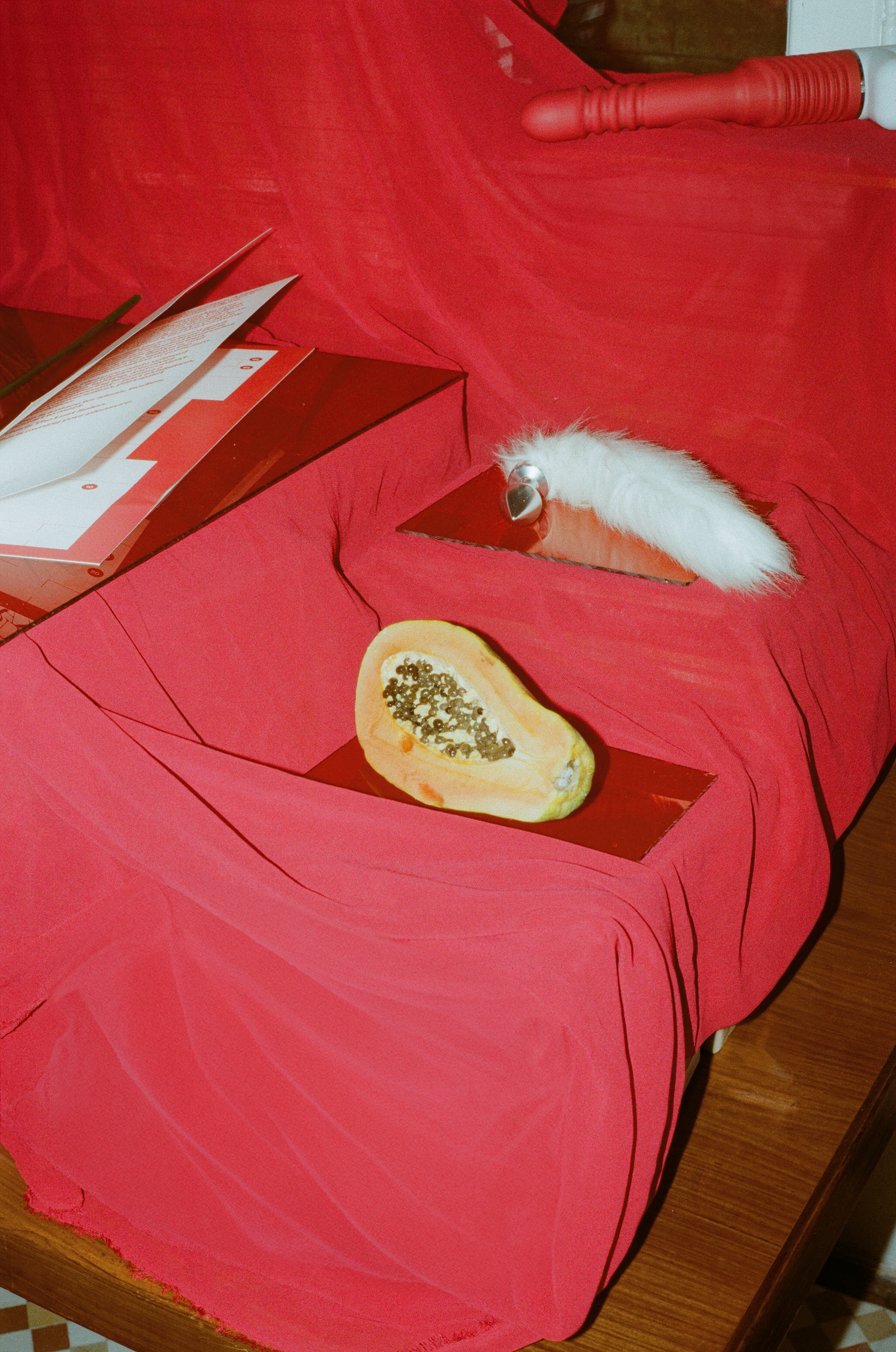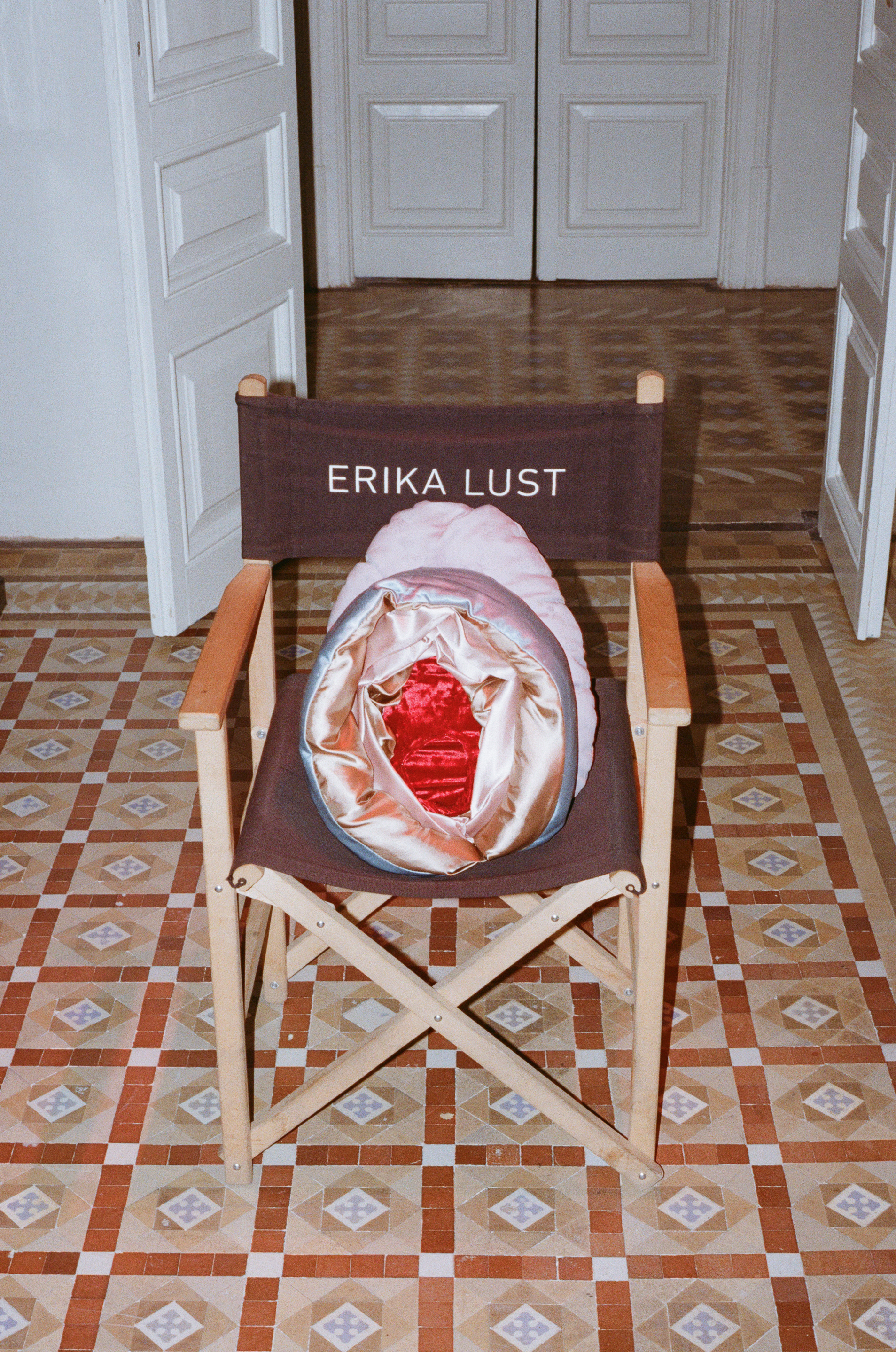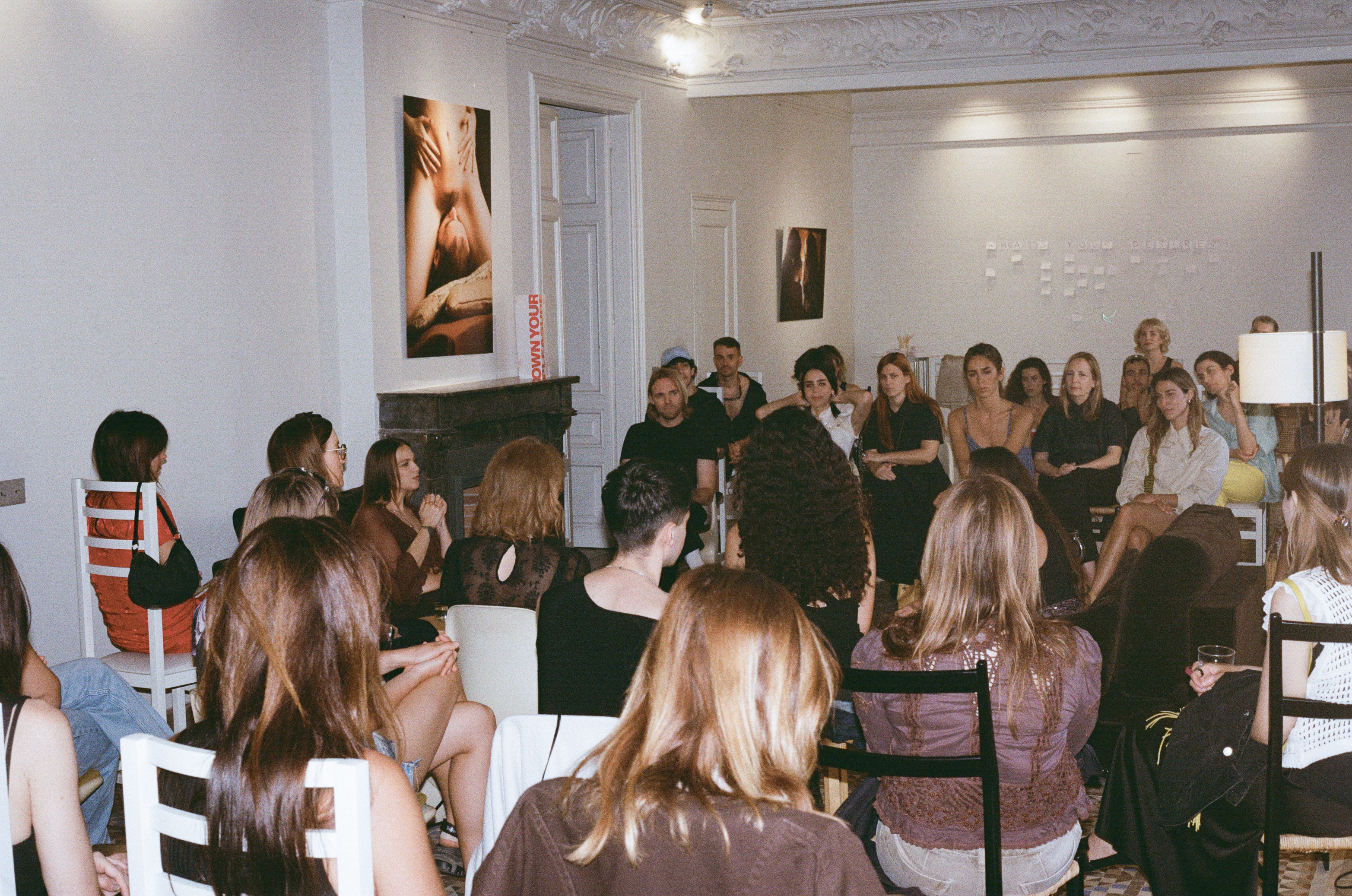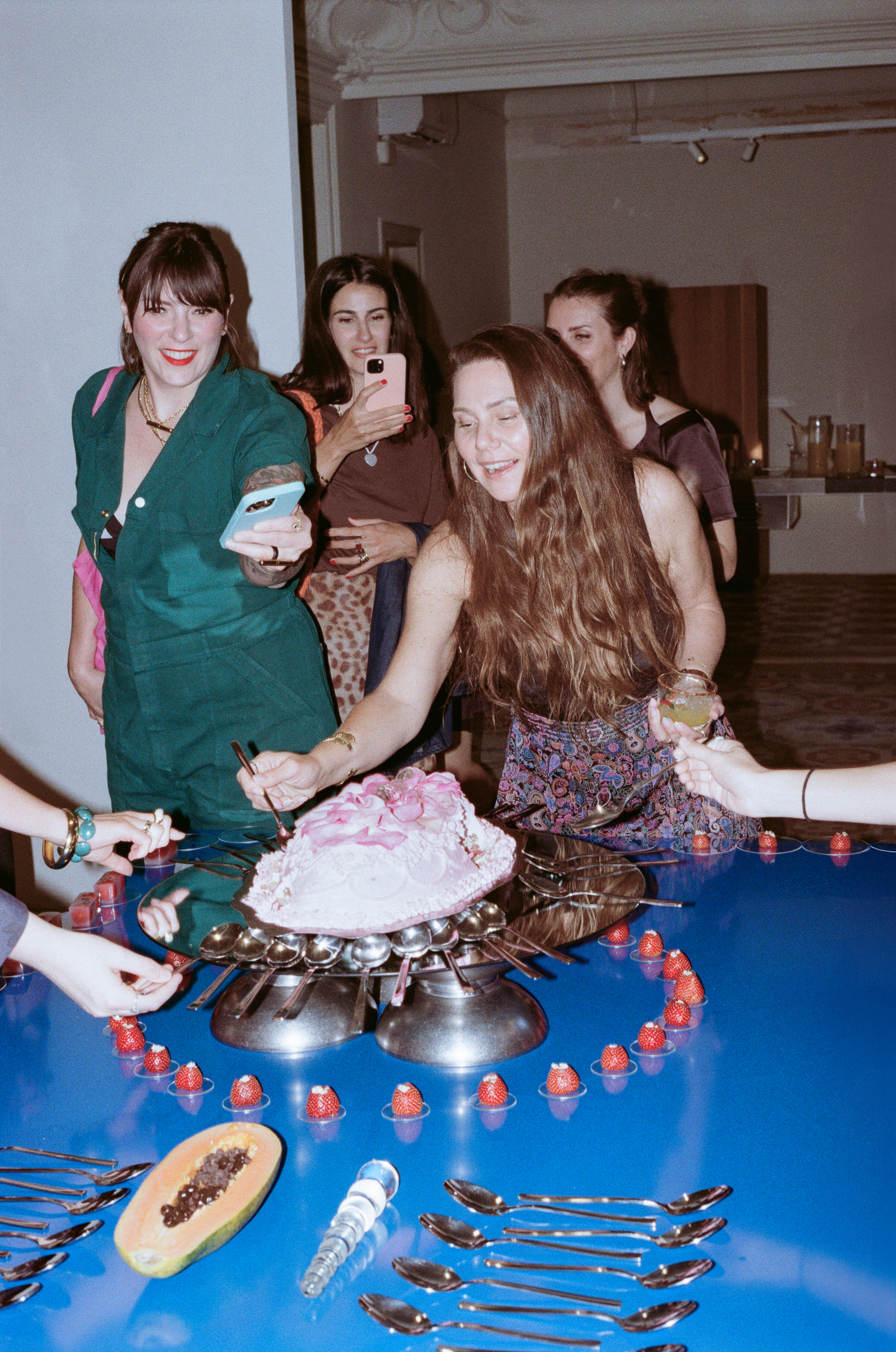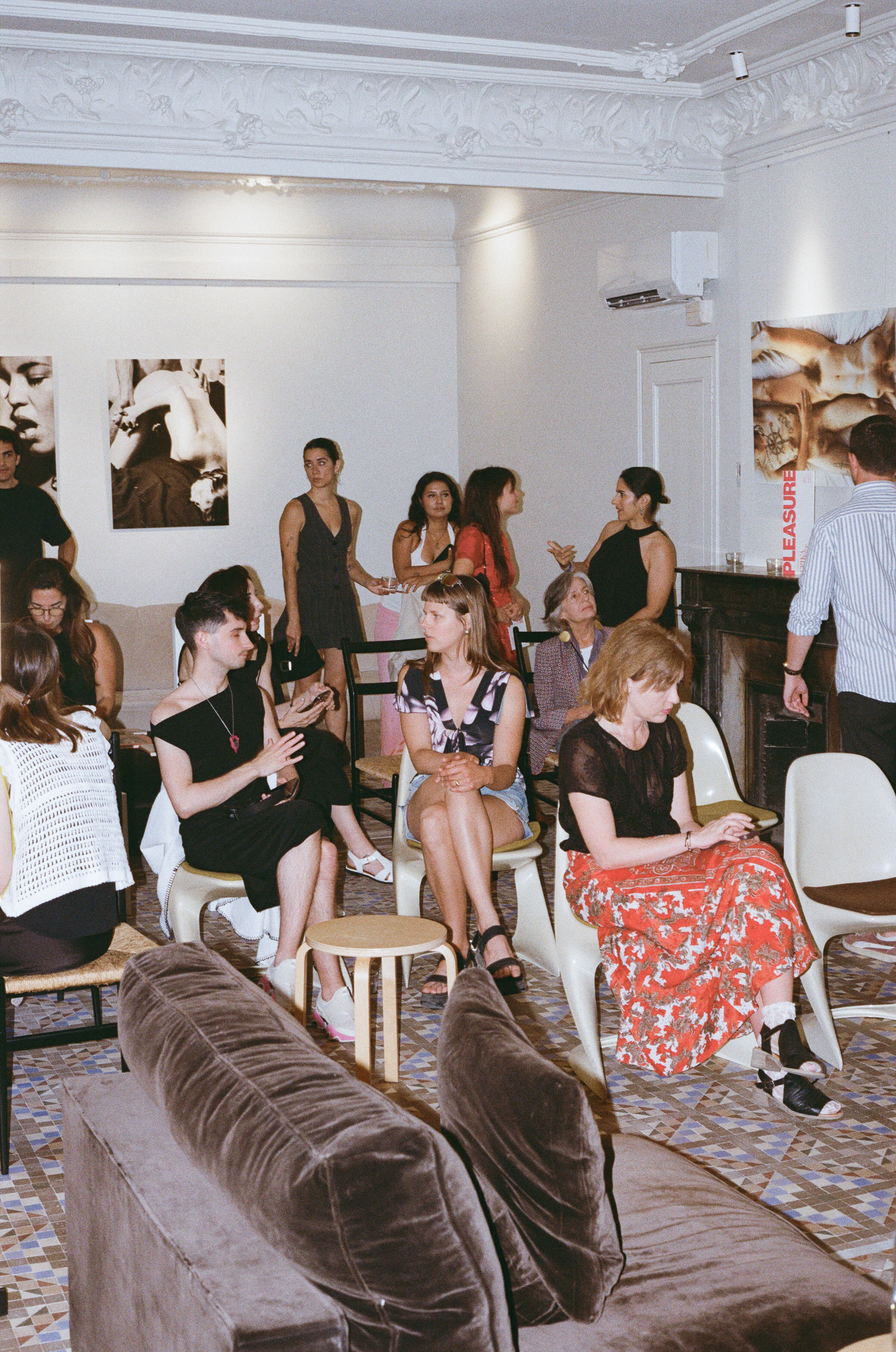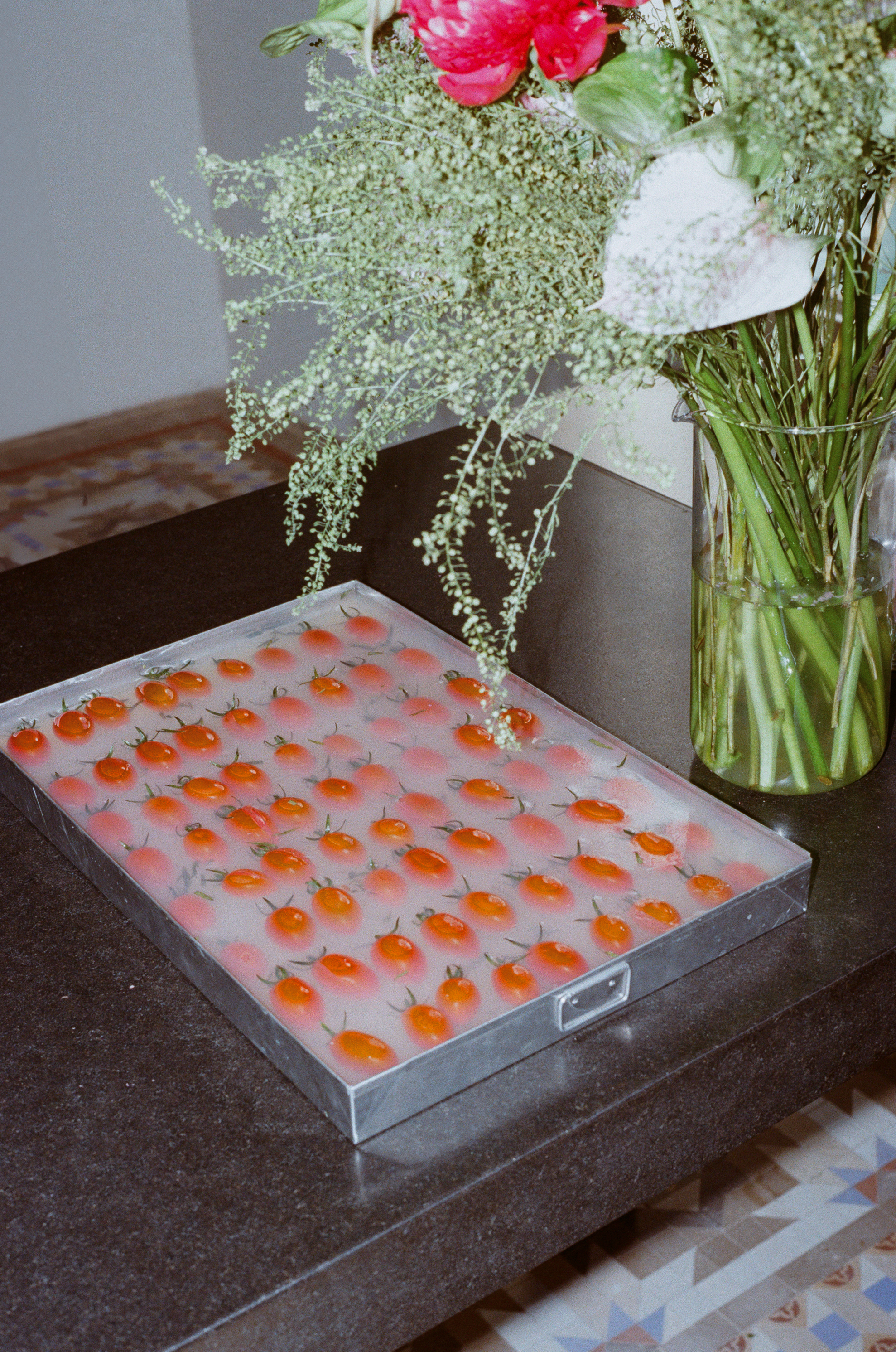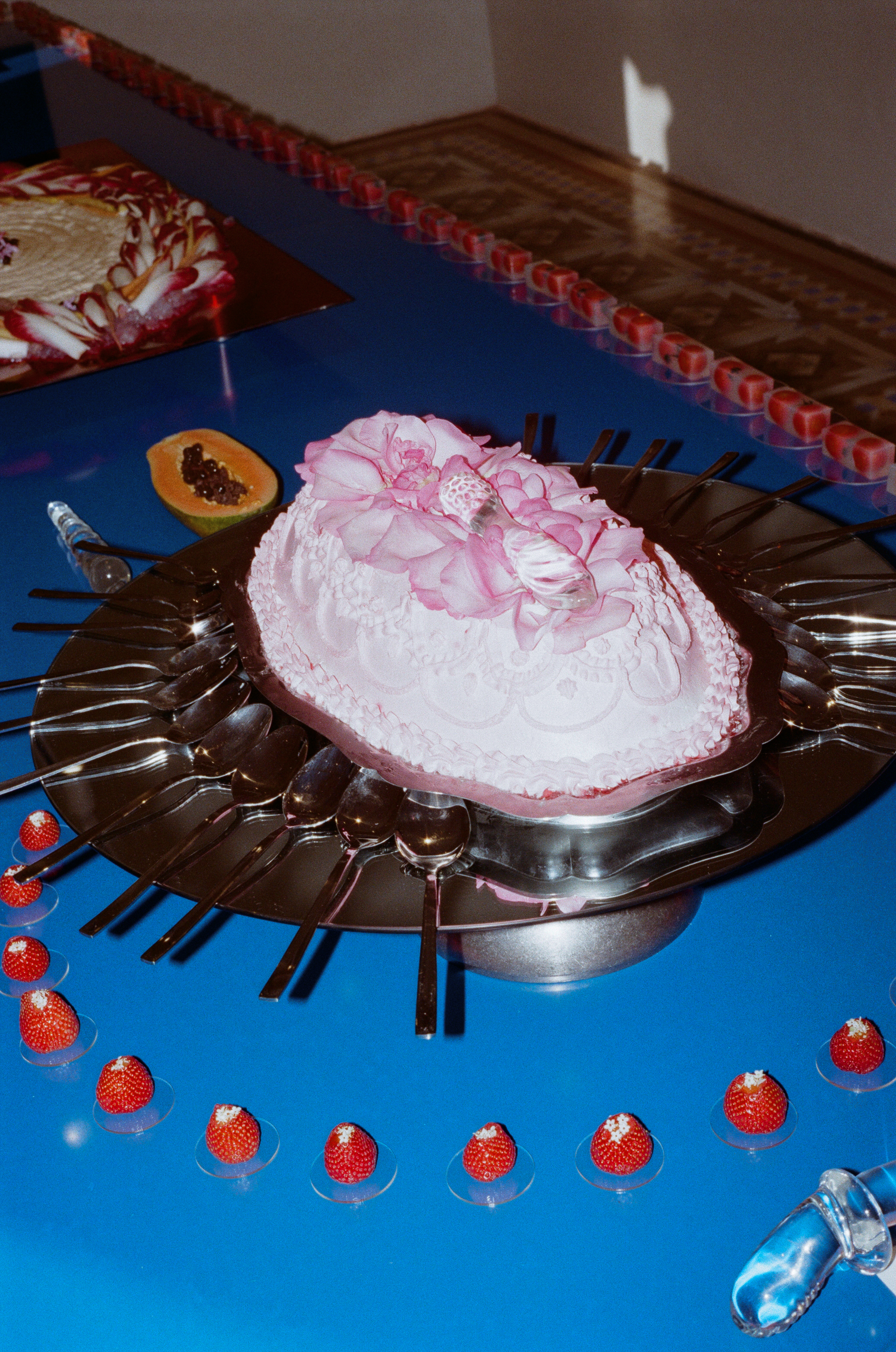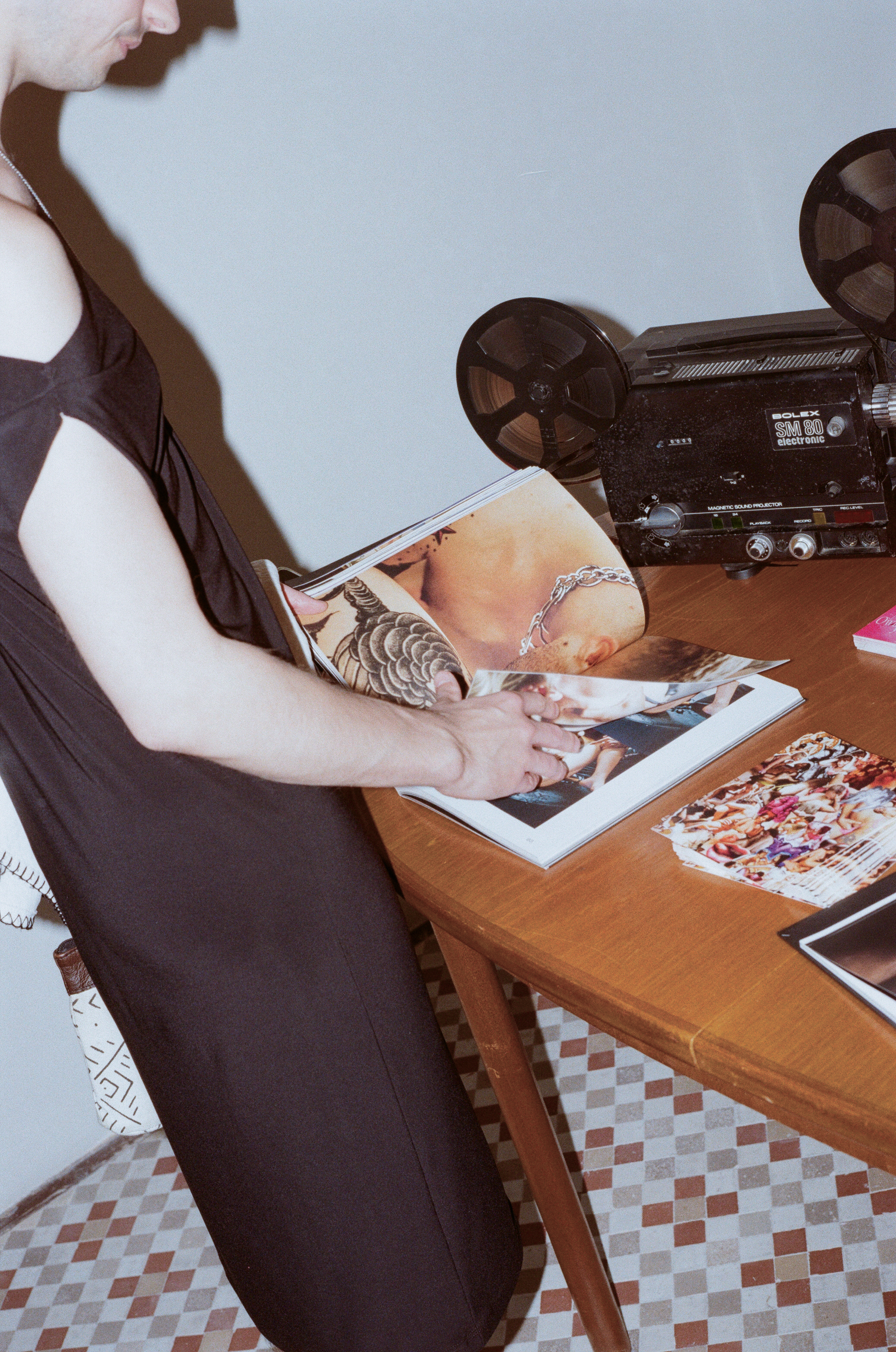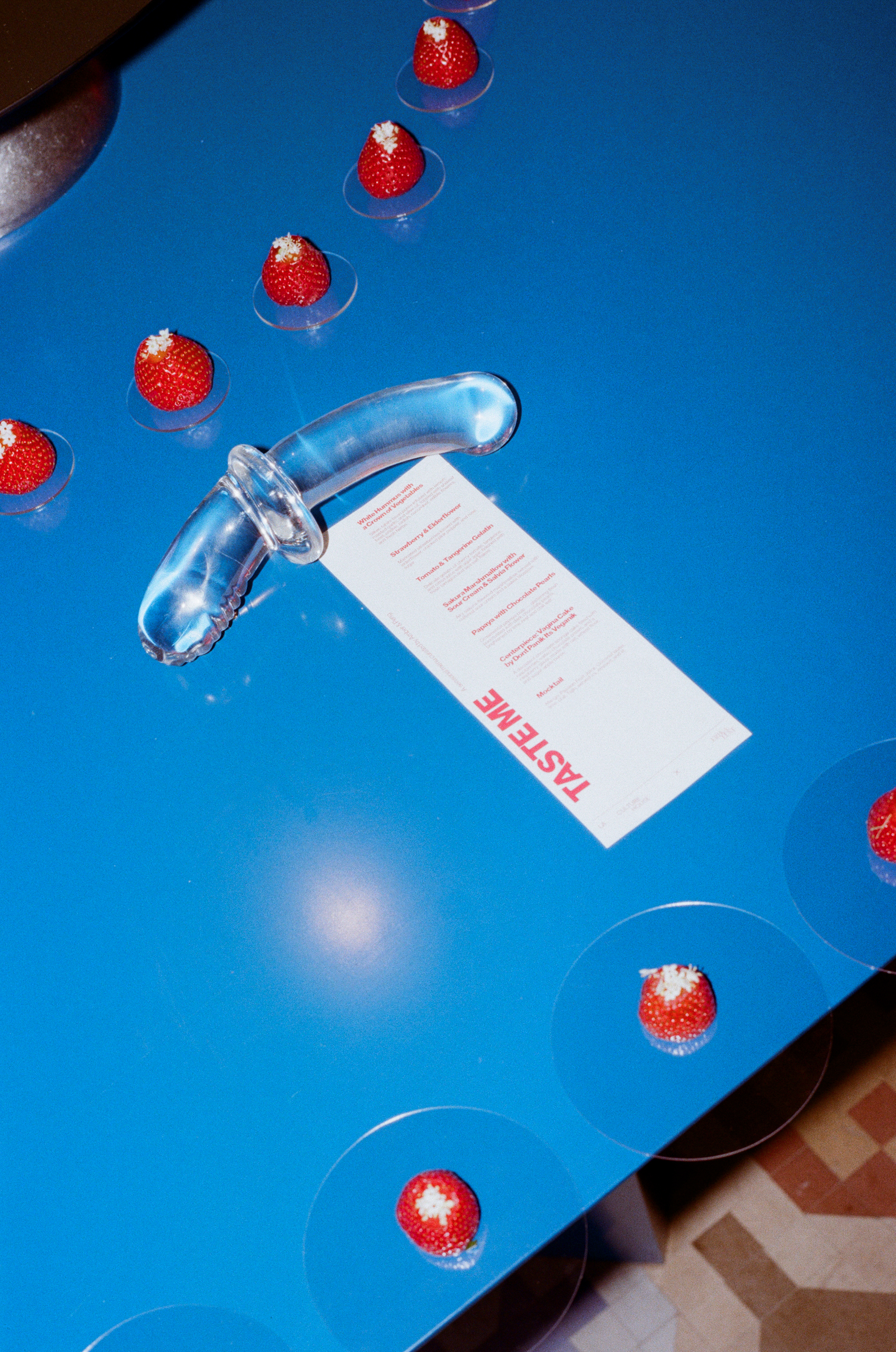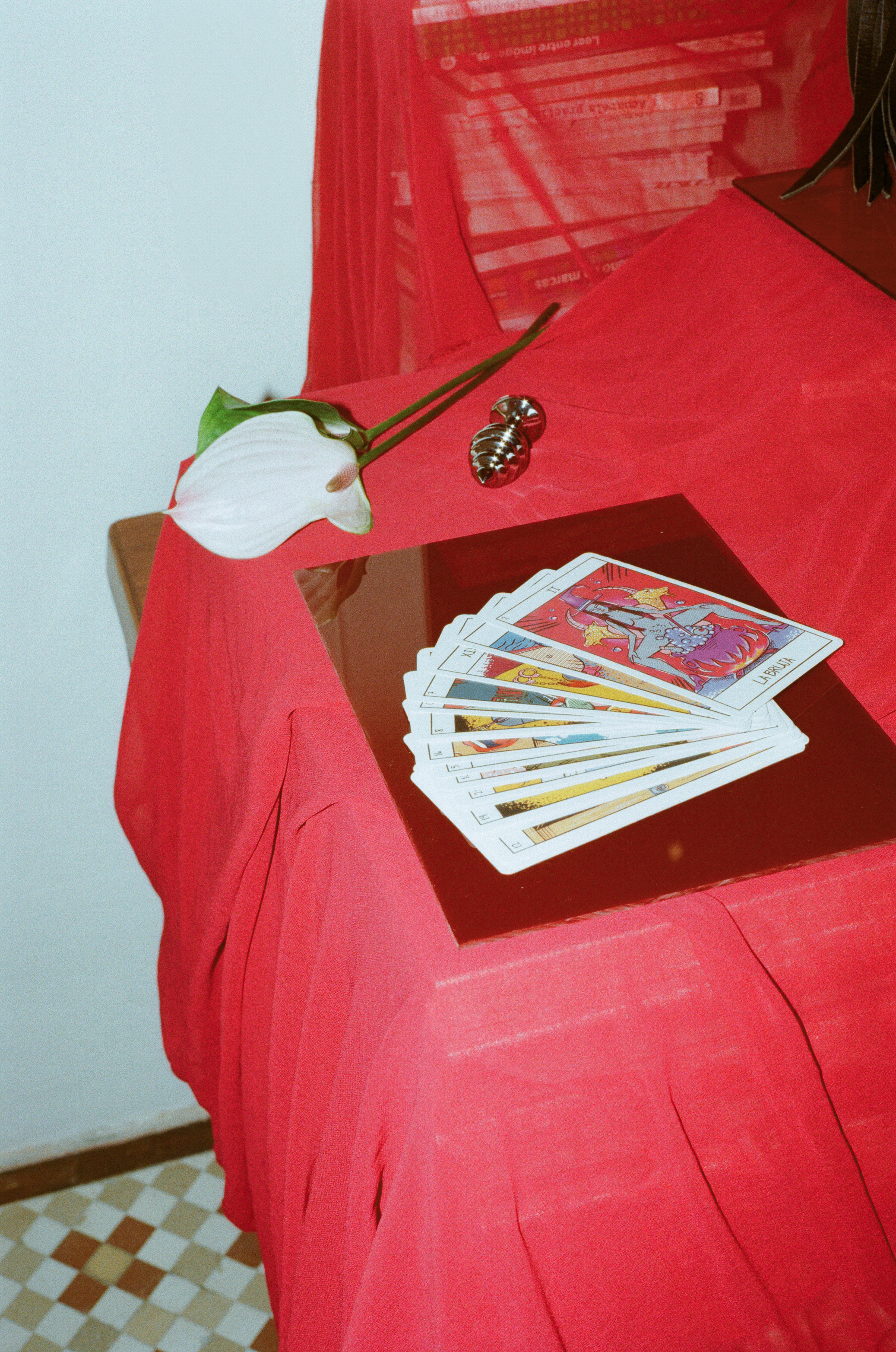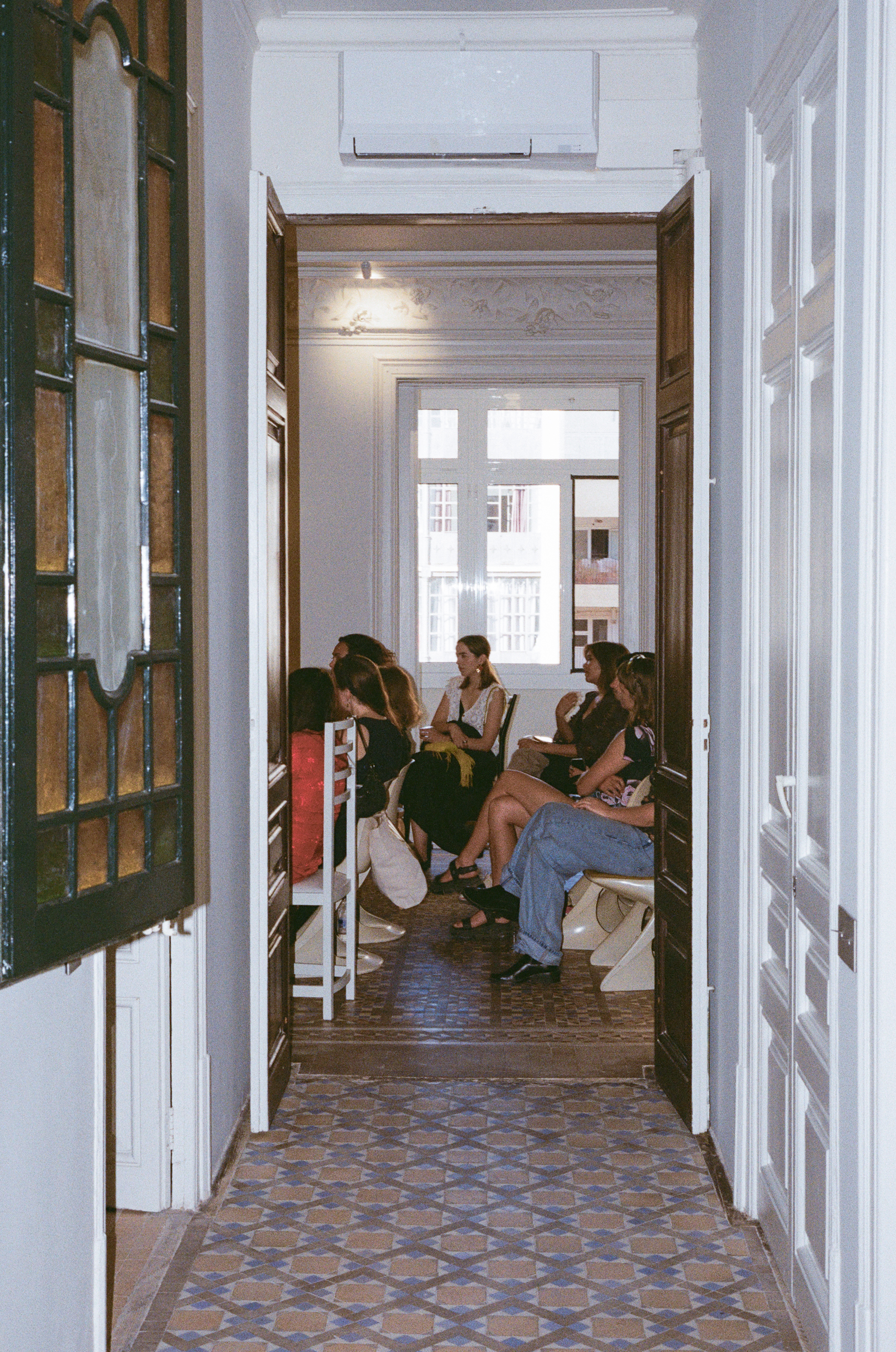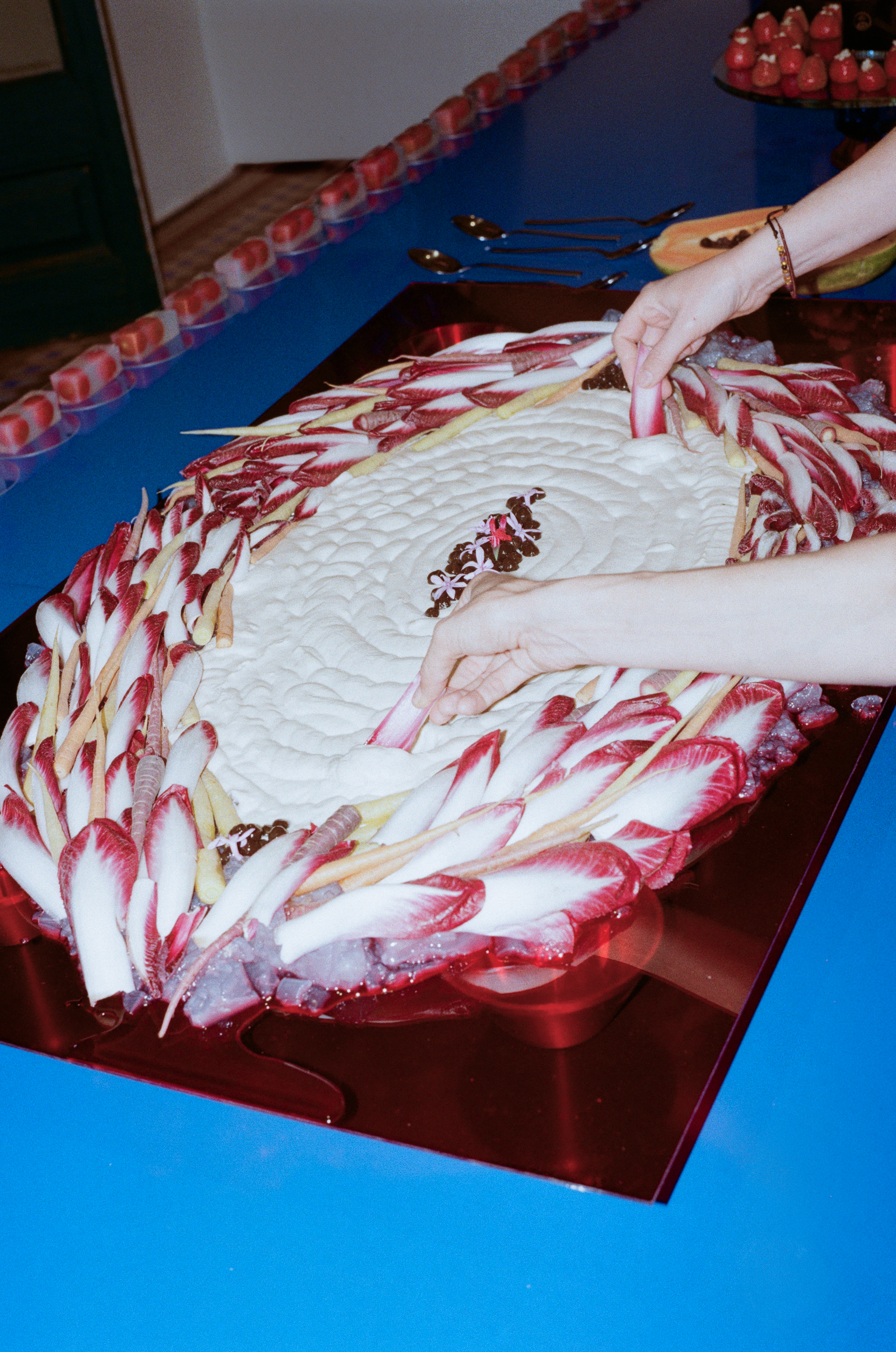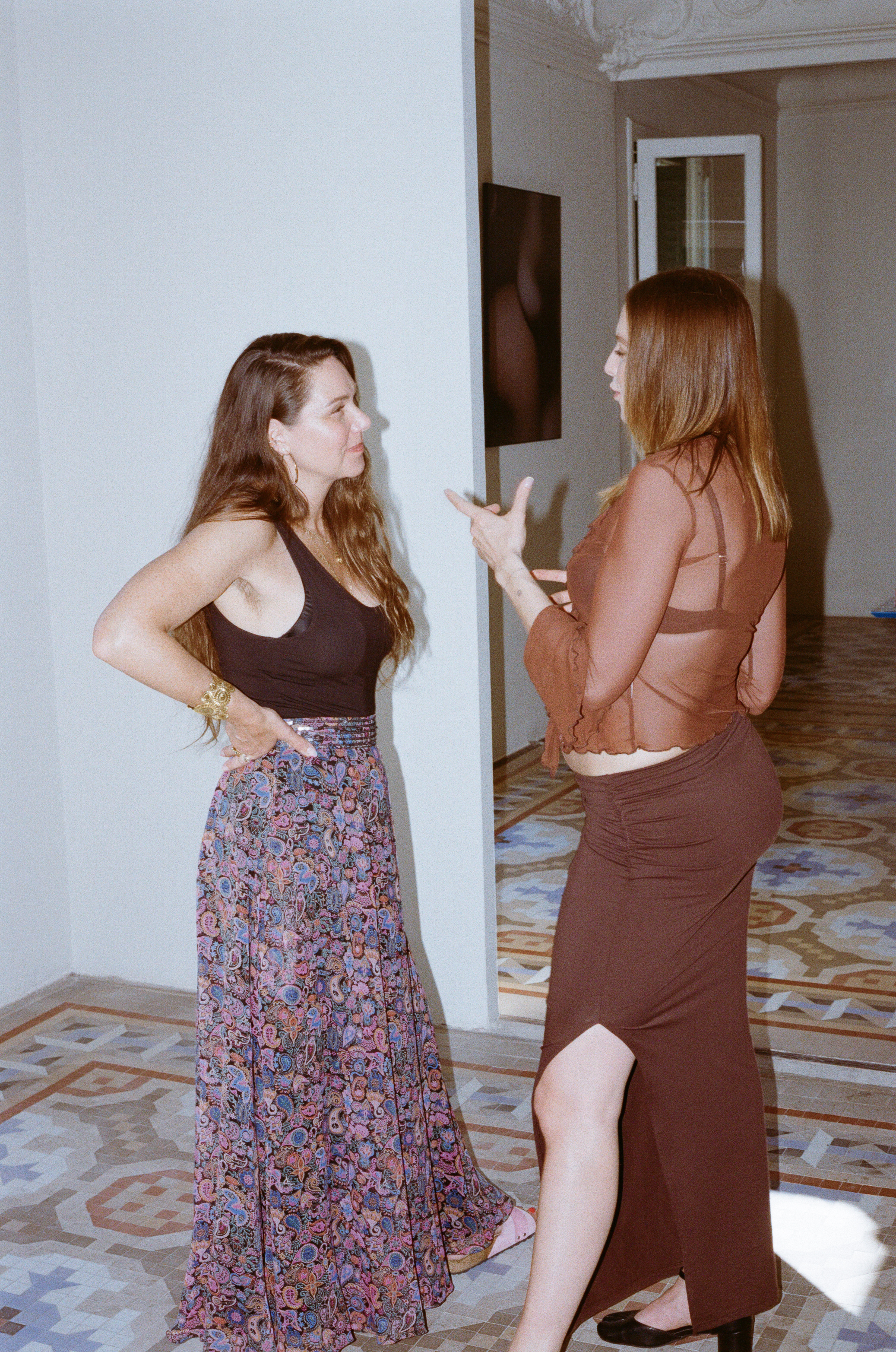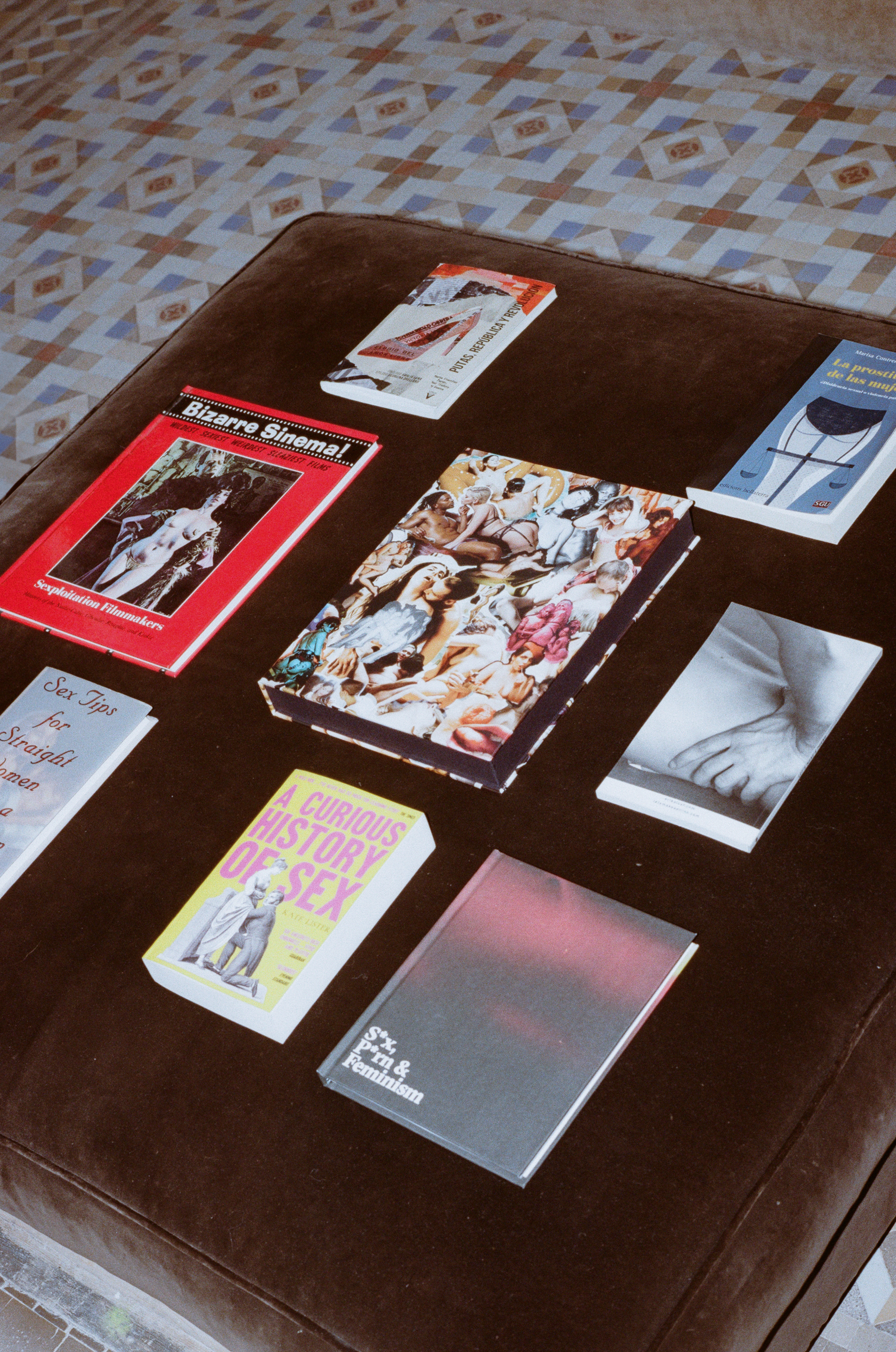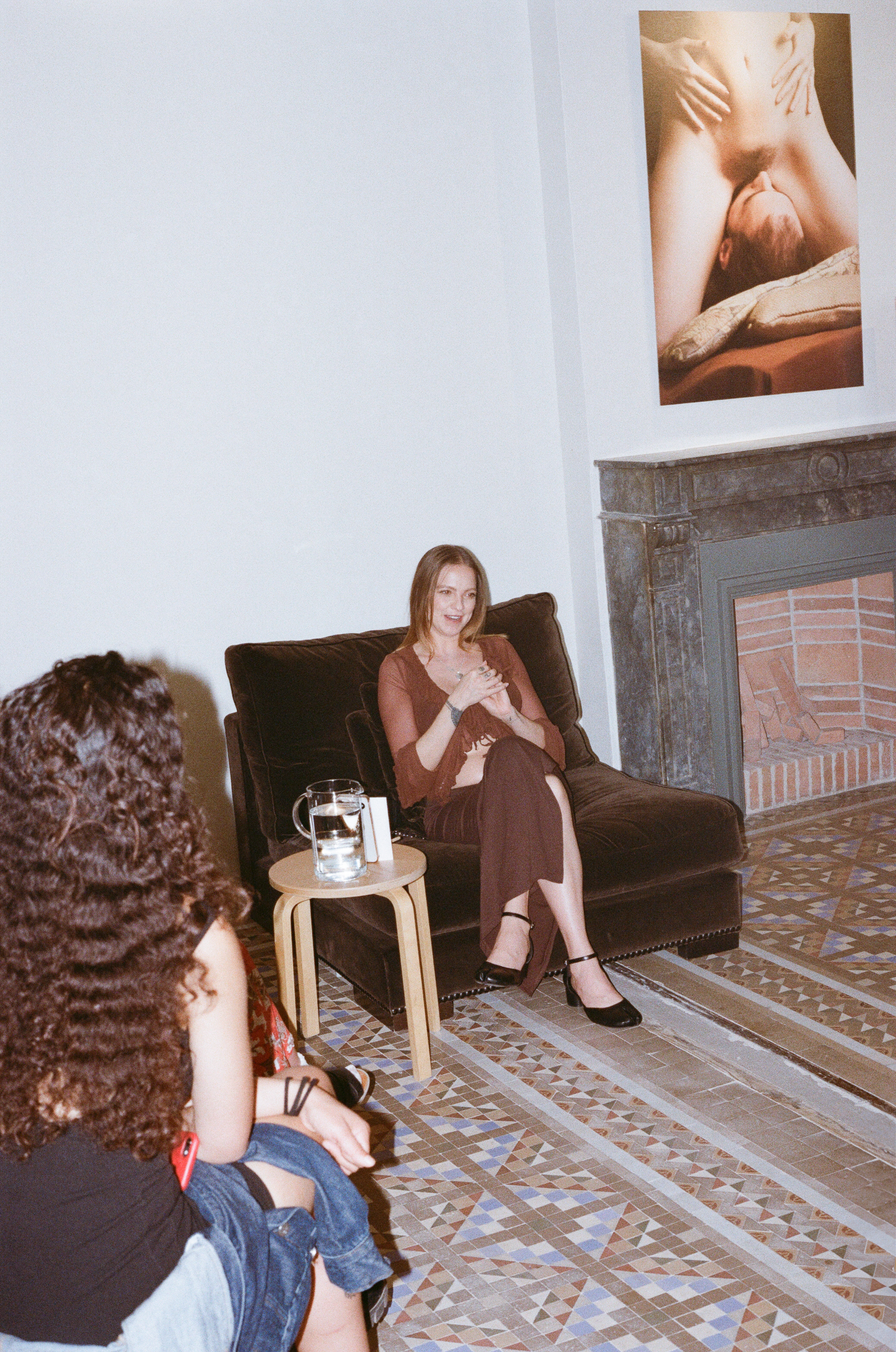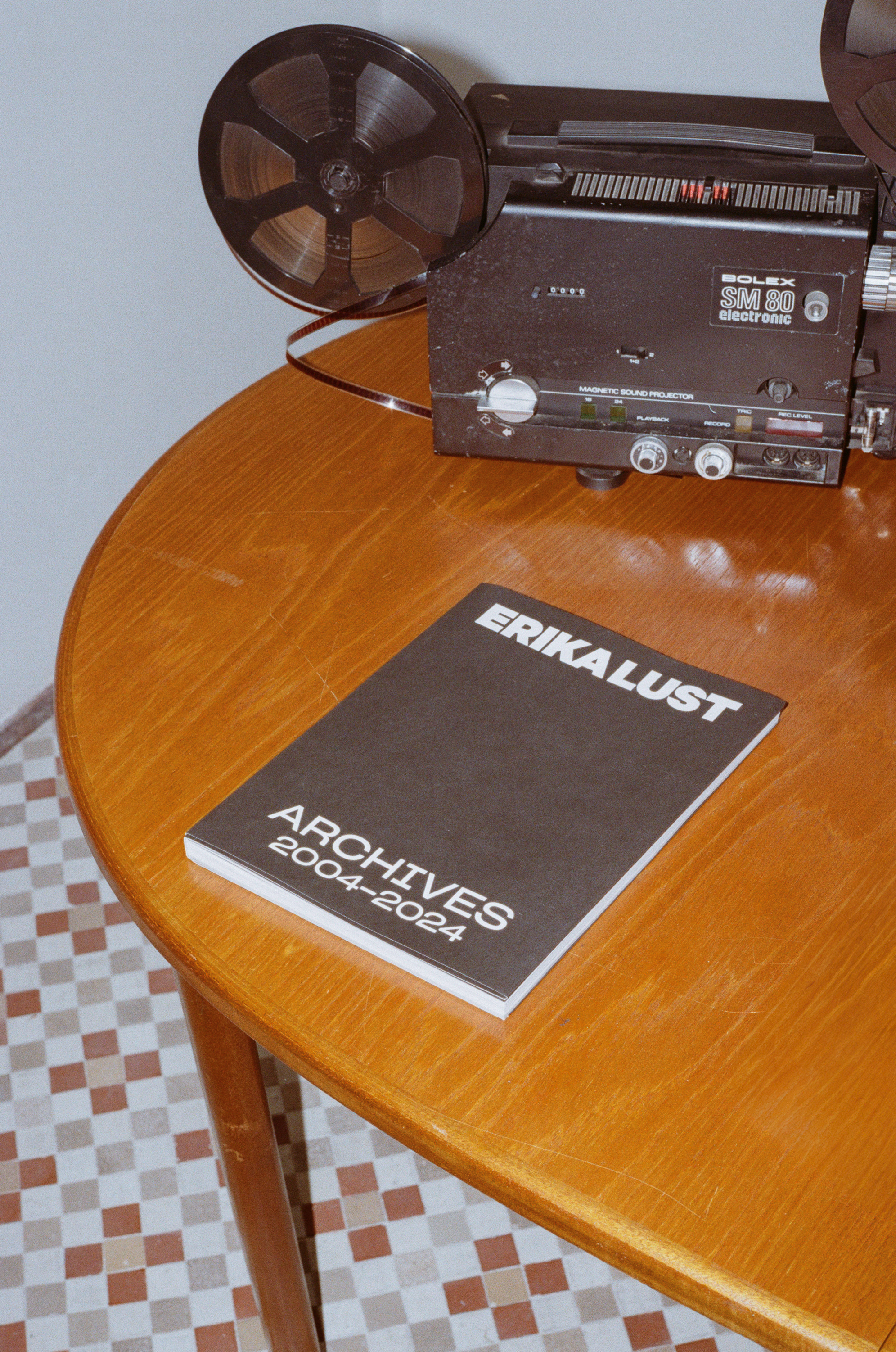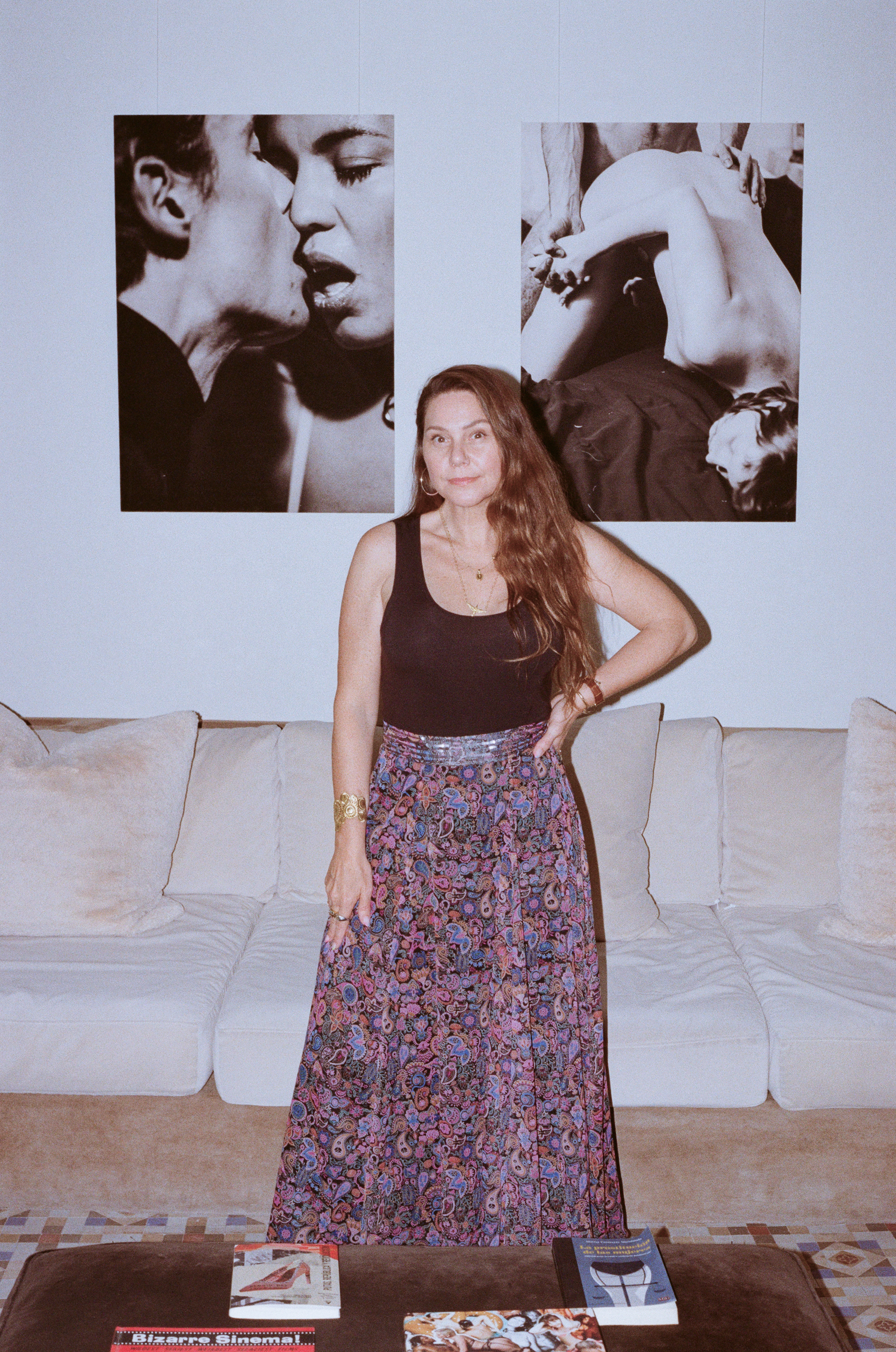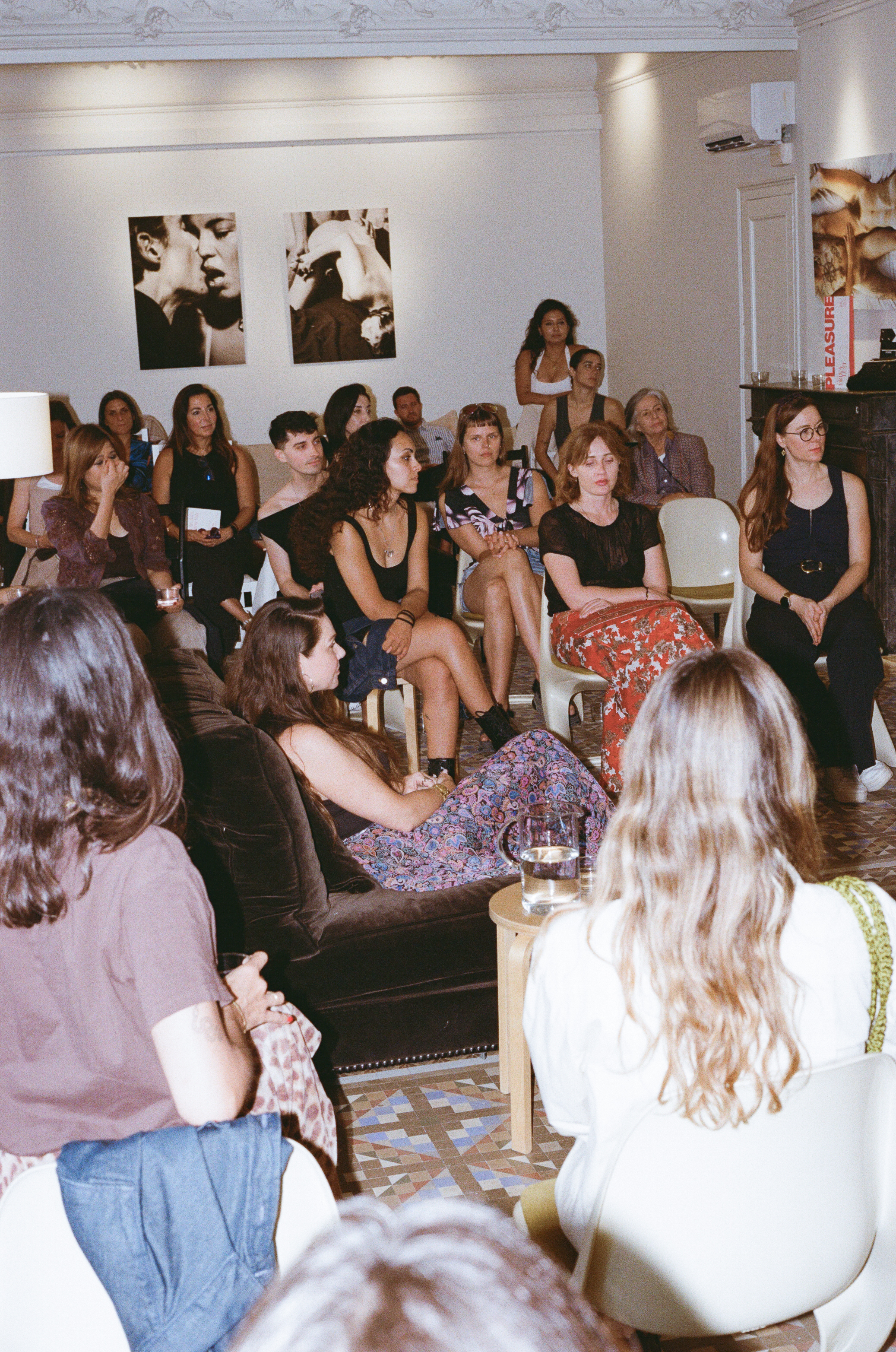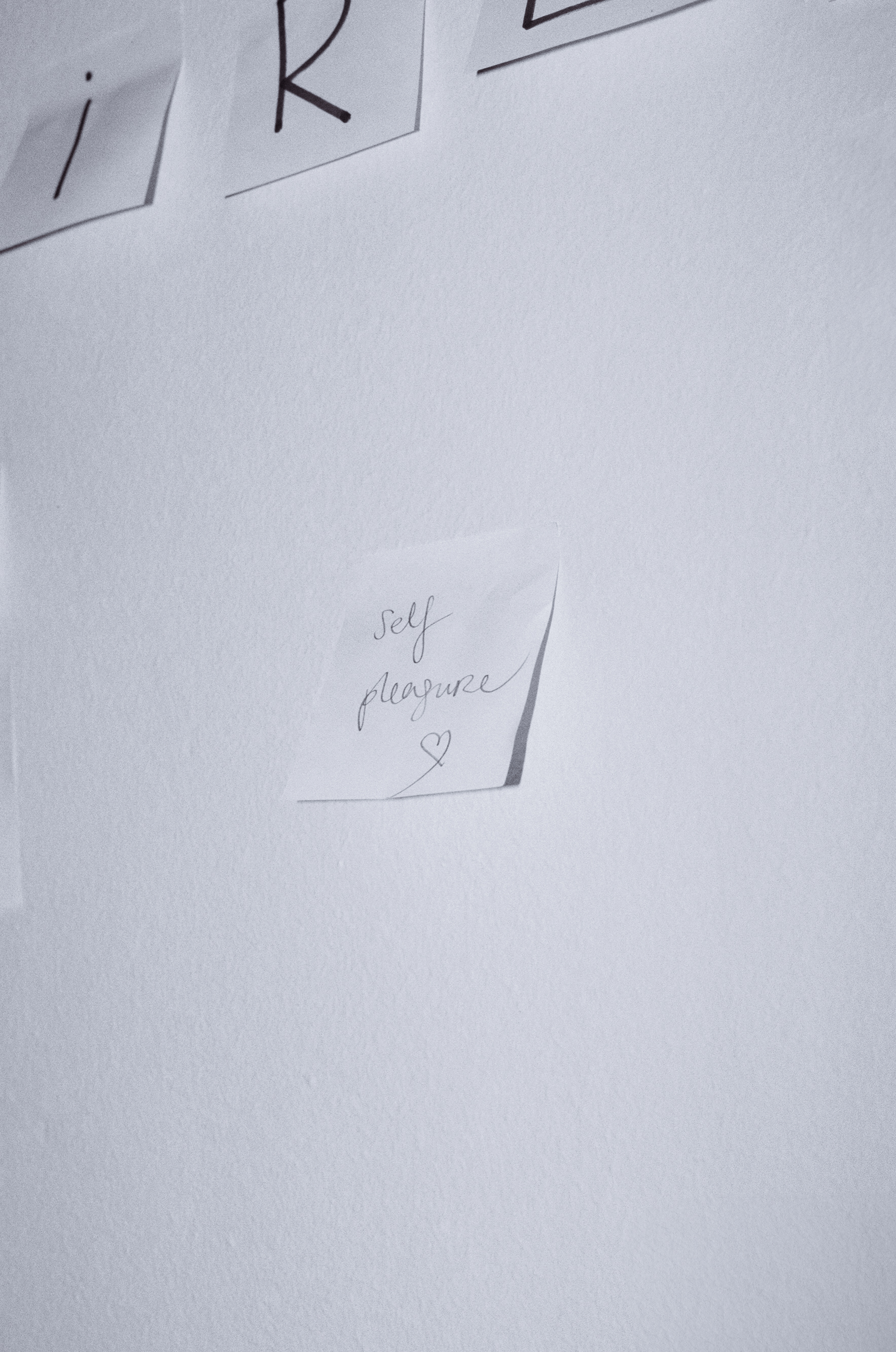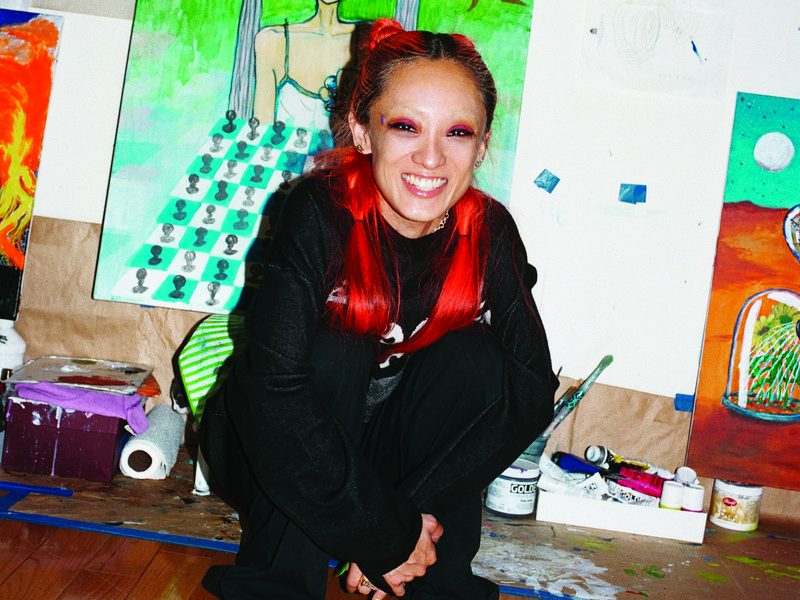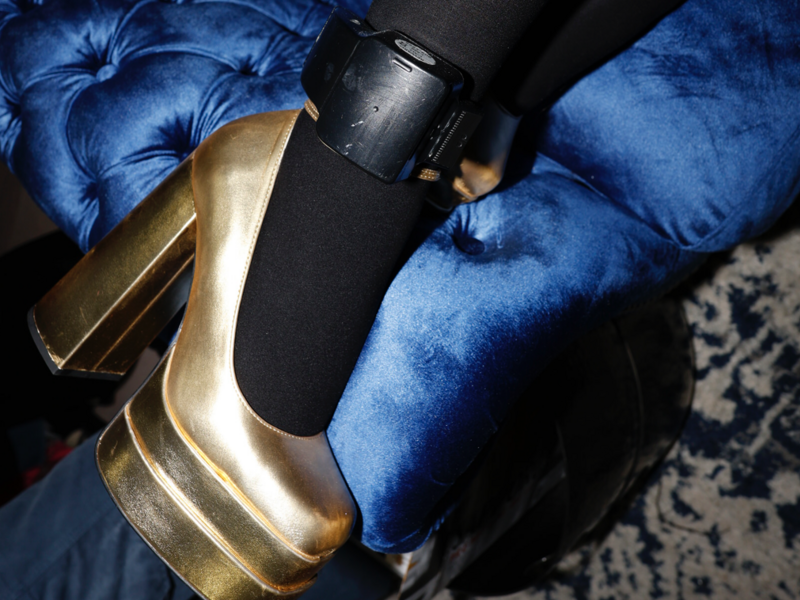Renaissance in the 18th: Jordan Brand, Youssouf Fofana, and Easy Otabor Celebrate the Neighborhood’s Rich History With District 23
Medrano’s photograph is great example — a wall lined with posters of braided hairstyles, vibrant yet worn with time. The orange walls, framed certificates, and service menus above the posters evoked a sense of familiarity, a scene that could be found in the 18th arrondissement, Bushwick, or beyond. For Fofana, the project was also a way to honor the neighborhood’s history of immigration. “This area has seen migration from all over the world, and now the new generation can tell their story,” he said, emphasizing how the exhibition ultimately paid homage to the community’s evolving identity.
Throughout the summer, District 23 also hosted a creative summer school led by Fofana, continuing his work with United Youth International to support young creatives from underrepresented backgrounds. Four emerging designers — Ousmane Badirou, Essawe Lalaire, Allan Arma, and Phillipe Kaninda — were among the participants, representing the next generation of talent shaped by Paris, a city that, for all its complexities, remains a fashion capital.
In the interviews that follow, we explore their journeys, inspirations, and how they’re redefining creativity in a city that has long been a creative beacon.
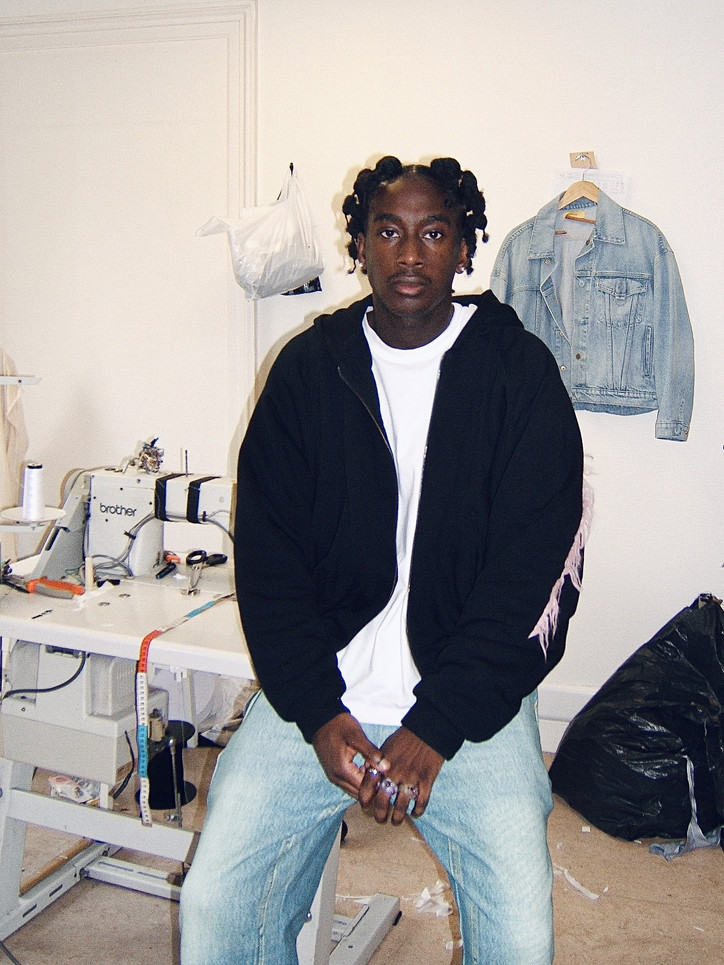
Photography courtesy of Samuelle Nono
What began as a side project fueled by a mutual love for fashion has grown into Abela023, a Paris-based brand founded by Ousmane Badirou and his brother. Reflecting their journey from young adulthood to maturity, Abela023 offers a fresh take on menswear classics. Driven by the freedom to create and the thrill of seeing their designs become part of someone’s identity, the brothers continue to work seamlessly together.
Ousmane’s inspirations start with his parents, especially his mother, whose love for supplies, clothes, and her "madness for buying" left a lasting impression. His father’s determination and insistence on always being presentable also shaped his approach to fashion. “You have to be ready to meet anyone at any time,” his father would say — a principle Ousmane has carried into his work.
His Yoruba roots from Benin and Nigeria subtly infuse his designs, as does the rich cultural mix of the Parisian suburbs where he grew up. “I’m inspired by fascinating human beings and how misperceptions can spark creativity,” he shares, recalling how something as simple as a mismatched sweater can lead to the discover of a new silhouette.
Where might we find you on a Sunday afternoon?
Usually, my Sunday afternoons are reserved for watching football games on my sofa, and in the evening, I play 5-a-side with my friends.
Do you have any rituals?
Every design I make is written down in words before I start making sketches or tech packs.
What is your favorite place in Paris to be alone?
My favorite place to be alone is my kitchen, where I develop a lot of ideas and can cook because I'm greedy. In Paris, I'd say Season or Café Crème — these two places are opposite each other in the 3rd arrondissement. I work a lot there, and I can relax and look at my surroundings, as people in this neighborhood are well-dressed.
What was the last dream you had?
Honestly, I don't remember any of my dreams.
If you could interact with one person from the past, who would it be?
I think I'd try to meet Martin Margiela when he was at the head of his eponymous brand. This man is at the origin of so many brand concepts, but when you look at his work, you get the impression that everything has already been done. What we think of as innovative today, he was already asking those questions back then. And he managed to do all this without being in the spotlight, which is very hard to do these days.
Who have you been most proud to see wear a piece from your brand?
I would say my parents because they are our first haters — they don't always understand what we do and therefore don't easily validate our pieces. So, when they want one of our pieces, it's a sure thing. In terms of artist I would say Aminé. He's one of the artists who likes our pieces and really wears them, as well as MadeinTYO. These two guys were really genuine when we had a conversation with them.
What is one of your favorite patterns at the moment?
I’d say tiled patterns, like the ones we used in our last design — a pair of pajama pants. Patterns with small tiles and a good color are always a good idea for pants, jackets, or shirts. I'd still like to be able to develop my own motif in the future — it's an idea that never leaves my mind.
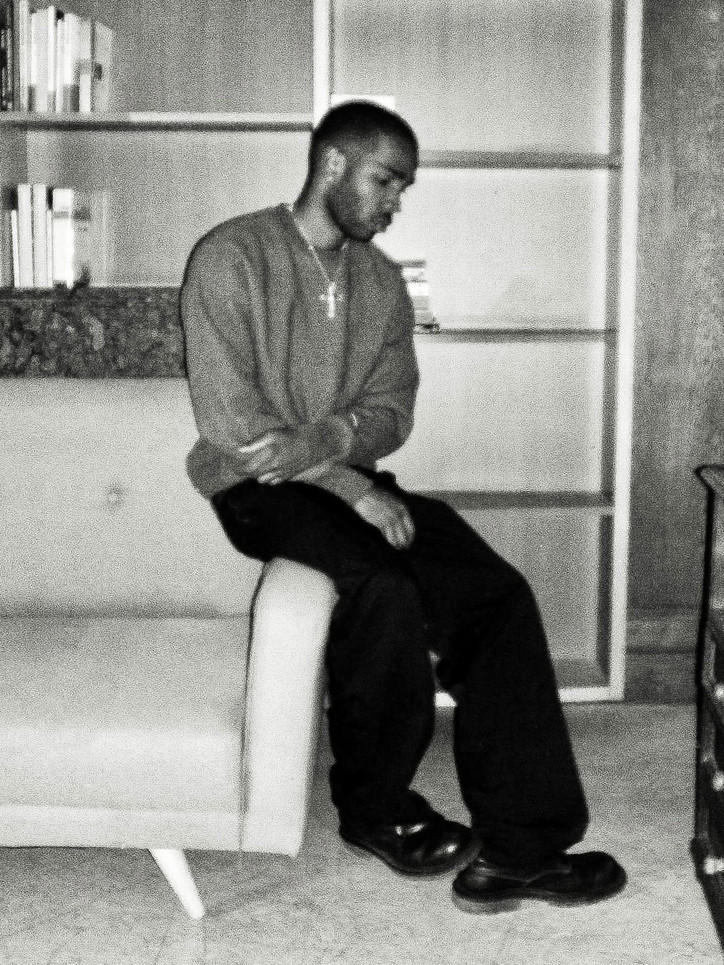
Photography courtesy of Samuelle Nono
A talented creative strategist and image maker, Allan Arma launched Maryse Seigu just over a year ago with business partner Yann Summers. Originally from Guadeloupe, Seigu focuses on uplifting narratives within locations where the Afro-descendant diaspora holds significant influence yet remains underrepresented in visual media. For Arma, the brand is more than a business — it’s a tribute and creative platform, allowing him to honor his heritage and freely experiment without limitations. With exciting new projects on the horizon, Arma shares his inspirations, daily rituals, and thoughts on the recent Olympic Games in Paris, as well as the unique blend of cultures that shapes his work.
How have you been spending your days this summer?
At first, I wanted to leave Paris and go to my hometown of Guadeloupe, but I had some projects to finish and got caught up in the Olympics. Staying turned out to be a good decision; I’ve been attending the games and catching up with friends that stayed in the city.
What’s inspiring you right now?
I'm inspired by the perception of ‘failure’ and how, with the right mindset, it can be leveraged to your own advantage.
Where might we find you on a Sunday afternoon?
I have a coffee shop near my place where I like to chill, organize my week, and take calls.
Do you have any rituals?
My only constant ritual is prayer.
If you could interact with one person from the past, who would it be?
I’d love to talk with Édouard Glissant because his theories from two decades ago remain extremely relevant today and would really help us as a society. I use a lot of his archive with Hans Ulrich Obrist; it is well documented.
Who have you been most proud to see wear a piece from your brand?
Definitely my close friends. They truly represent the brand essence in a tangible way.
What is one of your favorite patterns at the moment?
I am not necessarily focused on ready-made patterns but one that I would like to find a way to incorporate into my work would be madras.

Photography courtesy of Samuelle Nono
The brainchild of Essawe Lalaire, Omo Ita embodies her own journey of self-discovery and expression. The brand’s name, which means “wanderer” in Yoruba, reflects Lalaire’s own path — one that began with sewing clothes for a teddy bear as a child and evolved into a deep passion for garment construction and design. For the past year, Lalaire and her business partner have been working independently to bring this lifelong dream to life.
“My favorite part of the process is when we take our initial ideas and references and craft a storytelling direction. It’s an enriching phase where ideas meet and challenge each other," Lalaire tells us of their creative process, which much like the wanderer that inspired the brand’s name, is always changing. The duo is gearing up for the release of the brand’s first silhouette; Lalaire shares insights on the importance of storytelling through her work, where we might find her on a Sunday afternoon, and her favorite pattern right now.
How did you spend your days this summer?
My days were filled with work for Omo Ita, my job at a haute couture embroidery atelier, and I also had the opportunity to attend a design masterclass at the Jordan district. In between all of that, I managed to fit in outings with friends.
What’s inspiring you right now?
At the moment, I’m inspired by watching African films from the 70s and 80s. I’m rewatching some classics, like Touki Bouki by Djibril Diop Mambéty.
Where could we find you on a Sunday afternoon?
On a Sunday afternoon, you'll find me either at our studio or in a park, sipping apricot juice and listening to music.
Do you have any rituals?
I ask God for strength before starting anything new. It helps me find courage and confidence in myself.
What’s your favorite place in Paris to be alone?
Any bookstore or record shop where I can spend hours browsing.
What’s the last dream you had?
Unfortunately, I rarely remember my dreams so I am not sure, but my daydreams often involve designing and decorating apartments!
If you could interact with someone from the past, who would it be?
Rudolf Duala Manga Bell.
Who are you most proud to see wearing a piece from your brand?
Honestly, I’m proud no matter who wears the clothing. It’s powerful to see someone wear your idea and embrace the movement. With Omo Ita, we’re really committed to creating a community of “Omo Ita” who recognize themselves through the pieces and the messages we convey.
What’s one of your favorite patterns right now?
Very French — but stripes!
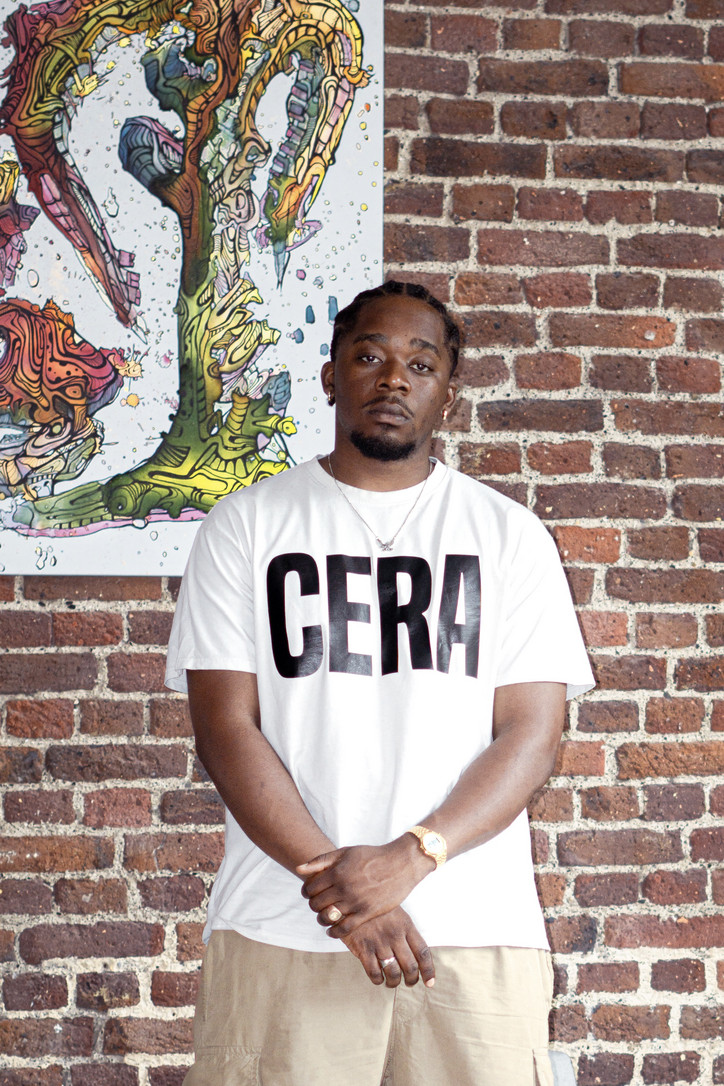
Photography courtesy of Sélim Laviolette
A movement born from the underground, Corrupted Era is more than just a streetwear brand. Frustrated by how restrictive social norms inevitably bleed into fashion, founder Philippe Kaninda started designing pieces for himself that better reflected how he wanted to be seen in the world. It wasn’t long before “others who didn’t quite fit the mold” started noticing. Now, as a full-fledged designer, Kaninda’s mission is simple: disrupt the status quo and create collections that “let everyone express themselves however they want.” With exciting new releases on the horizon and a series of immersive events that go beyond your typical fashion show, Kaninda’s motivation remains unchanged. “It’s amazing to see people rock our pieces and make them a part of their identity. That’s what makes it all worth it," he tells us.
What’s inspiring you right now?
Right now, I’m inspired by New York movies, especially by Spike Lee. The settings and their vibrant little details give me a lot of ideas.
Where might we find you on a Sunday afternoon?
On a Sunday afternoon, you might find me mixing house or hip-hop at home or watching an anime (probably One Piece)
Do you have any rituals?
Not really, I like changing my environment because it helps me think more clearly and come up with better ideas.
What is your favorite place in Paris to be alone?
I don’t really have a favorite spot in Paris yet — I haven’t unlocked that feature... But I do like hanging around the 3rd arrondissement. There are a lot of chill spots there.
What was the last dream you had?
My last dream? I was the leader of a cartel in the favelas of Rio. It was a really strange dream, but honestly, pretty awesome.
If you could interact with one person from the past, who would it be?
If I could meet someone from the past, it would be a visionary like Virgil Abloh. I’d love to understand his creative process and what inspired his groundbreaking work.
Who have you been most proud to see wear a piece from your brand?
I was most proud to see Jules Koundé wearing a piece from my brand. He is an icon of fashion and actually went out of his way to buy it from my site himself. That meant a lot.
What is one of your favorite patterns at the moment?
The Nigo sweater (tapestry) because it's thanks to it that I am where I am. This sweater has given the brand great visibility.


